We park up on the winding coast road from Stoupa to Karadmyli and walk down the lane to the house that was once the home of the writer Paddy Leigh Fermor and his wife Joan. It’s a beautiful place in a wonderful location, and available to rent at an exorbitant price. Sadly it’s never open to the public which is a great shame. Hidden behind steel gates and security fences I can see several CCTV cameras below the roof eaves. We walk along the perimeter fence to the end of the garden, where I see that it’s possible to climb a low wall to gain entry.


I’m thrilled to be a lonely errant trespasser in the shaded garden. There’s a bronze bust of Patrick on a plinth overlooking the sea. Stone steps wind down to a private beach where huge sandstone rocks are scattered amongst the spires of cypress trees. I’m careful to avoid the line of sight of the CCTV cameras – I don’t want to rouse any security operatives. Set apart from the house is a large studio with a roof terrace. Peering through the big windows I see an elegant, white, comfortably furnished room with a stone floor and a conical fireplace set in the corner. There’s a big desk and generous book filled shelves and bookcases. In 1969 Patrick described this room as his ‘powerhouse for prose’. I linger silently in the garden for a while, absorbing its essence. This was a vibrant house when the Leigh Fermoys lived here, welcoming a constant stream of visitors. Today it is eerily, yet charmingly, silent.
Most of the Mani can be accessed in about an hour so we plan a number of short excursions to the south and east of the peninsula.
To accompany us during the drive the FM radio in the van is tuned to Life FM, a station with only occasional DJs, just adverts and 80’s and 90’s rock music with a particular emphasis on tragedy (Greek tragedy!). They play a lot of Queen. I Just Died in Your Arms Tonight by The Cutting Crew and Keep On Loving You by REO Speedwagon seem to encapsulate the genre. We heard I’m Gonna Be Nobody’s Wife by Anouk several times. Jo seems to identify with the philosophy of this little number and will sing it with robust enthusiasm.
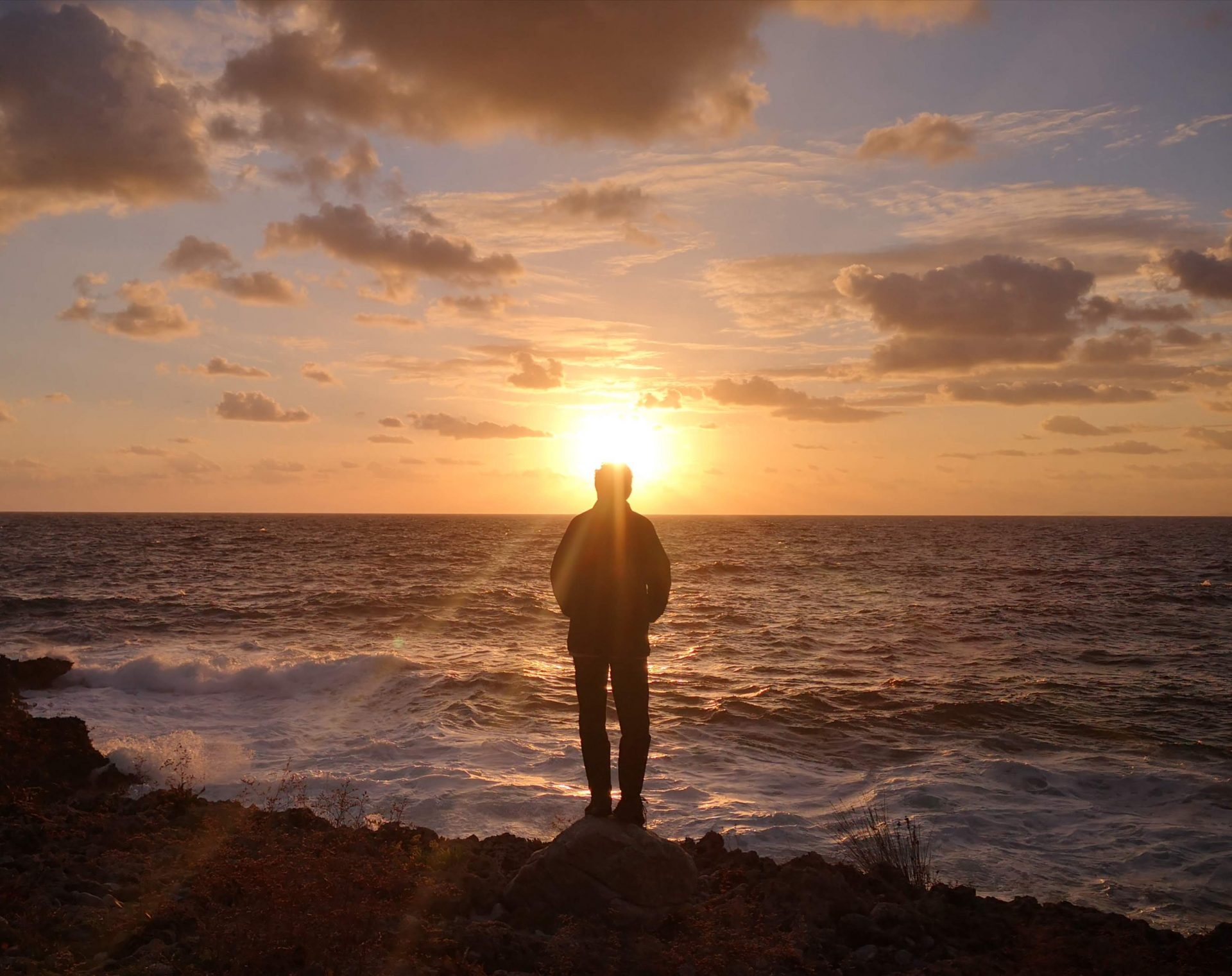
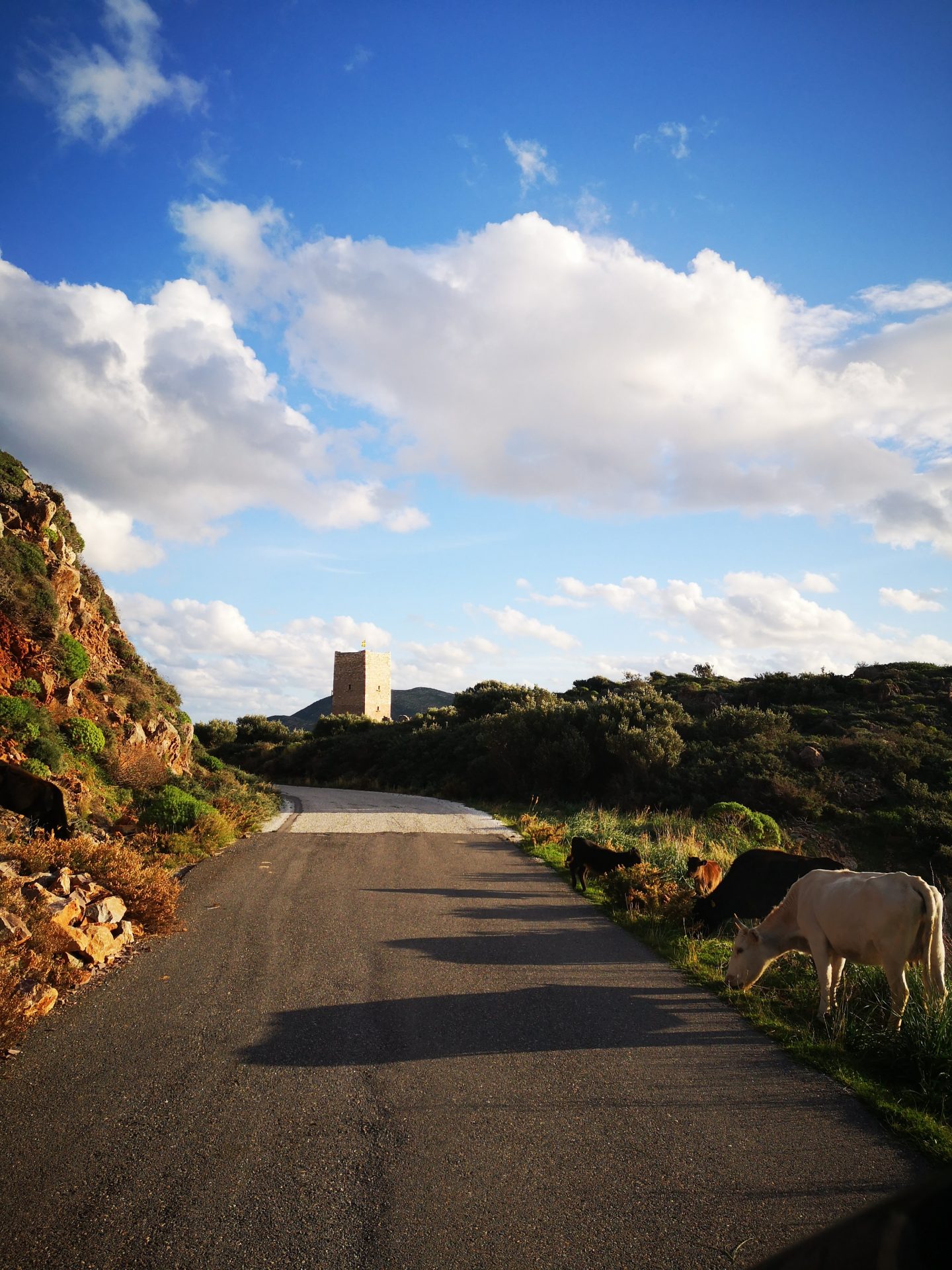
The south (The Deep) Mani is characterised by wild austere rocky uplands and an abundance of derelict, restored and sometimes new stone towers. Driving over these mountains Jo spots, a few hundred meters ahead, a very large bird of prey, hanging in the wind looking for prey. The Bird Guide indicates that it’s a rare Imperial Eagle. The following day I spend some time on the web researching the existence of the Imperial Eagle in Greece and checking our identification with more images. The shape of the wings and tail, the huge head, and the distinctive white underparts all point to the Imperial Eagle. However, the number of breeding pairs in the country is less than a dozen. It migrates vast distances from the Balkans, wintering in the Middle East or Africa but not all of them migrate. Could this bird possibly be an Imperial Eagle that has overwintered in Greece?
Near the tip of the Mani peninsula is the small fishing port of Gerolimenas. Surrounded by dark cliffs it has a haunted air – many of its buildings are empty and derelict. There’s a hotel next to the harbour – from the restaurant the proprietor spots us, and seemingly desperate for human interaction during Coronavirus lockdown, he steps outside to enthusiastically bid us good day. There’s a small group of youngsters, sitting outside the local taverna, drinking cans of Fix beer. The sea in the narrow bay is calm and to the amusement of the boozers, we swim in the clear calm waters of the harbour.

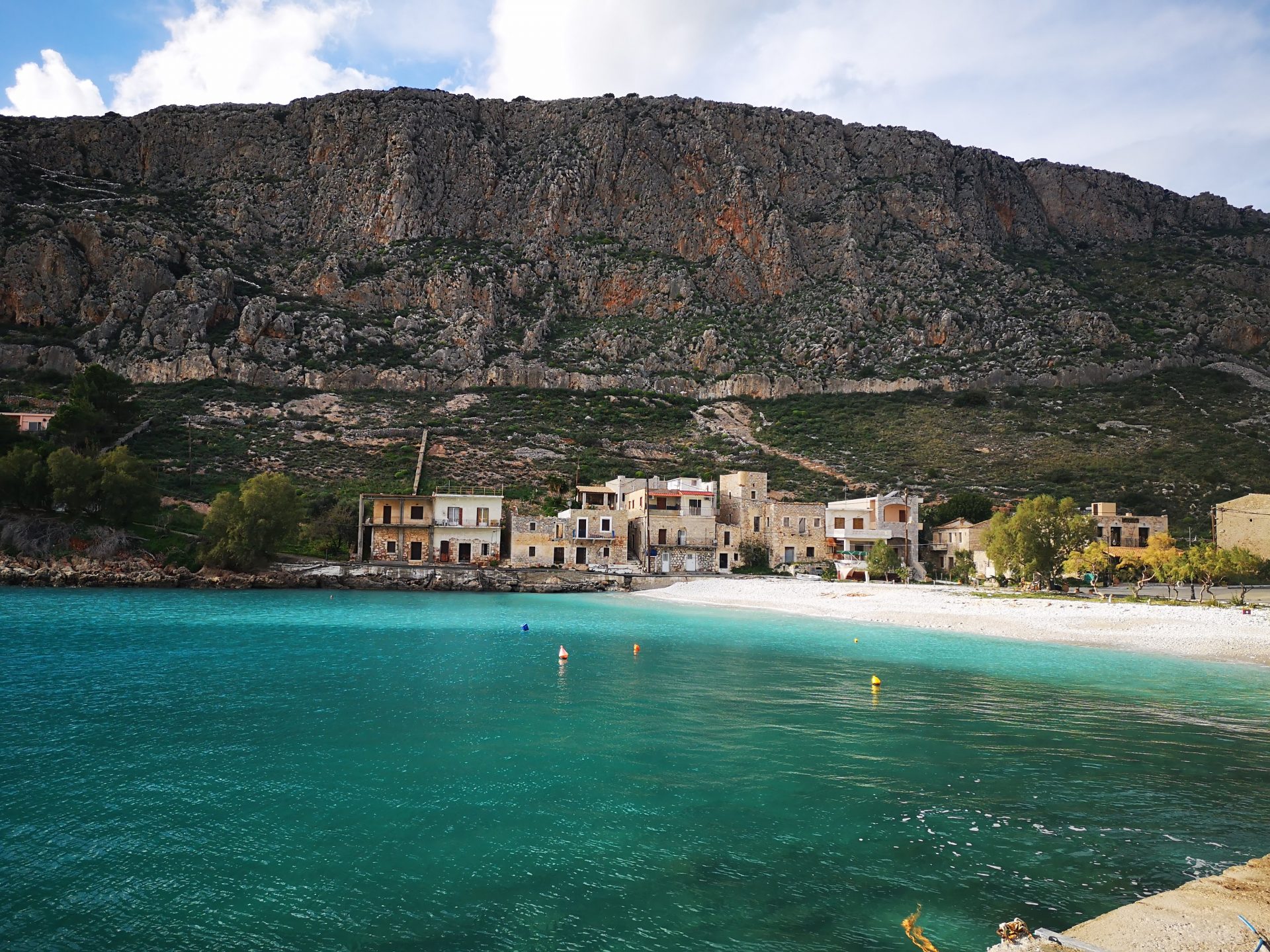
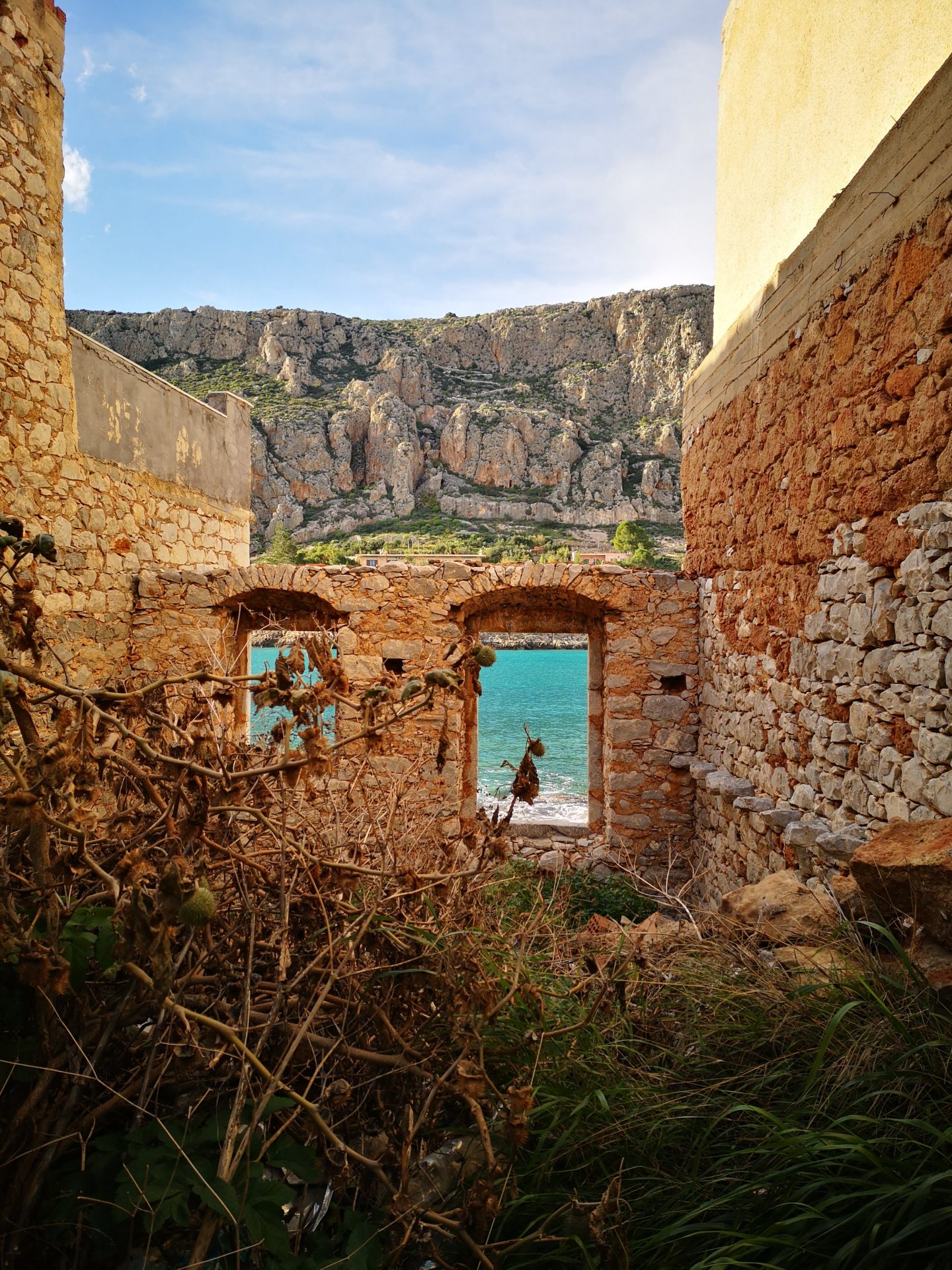
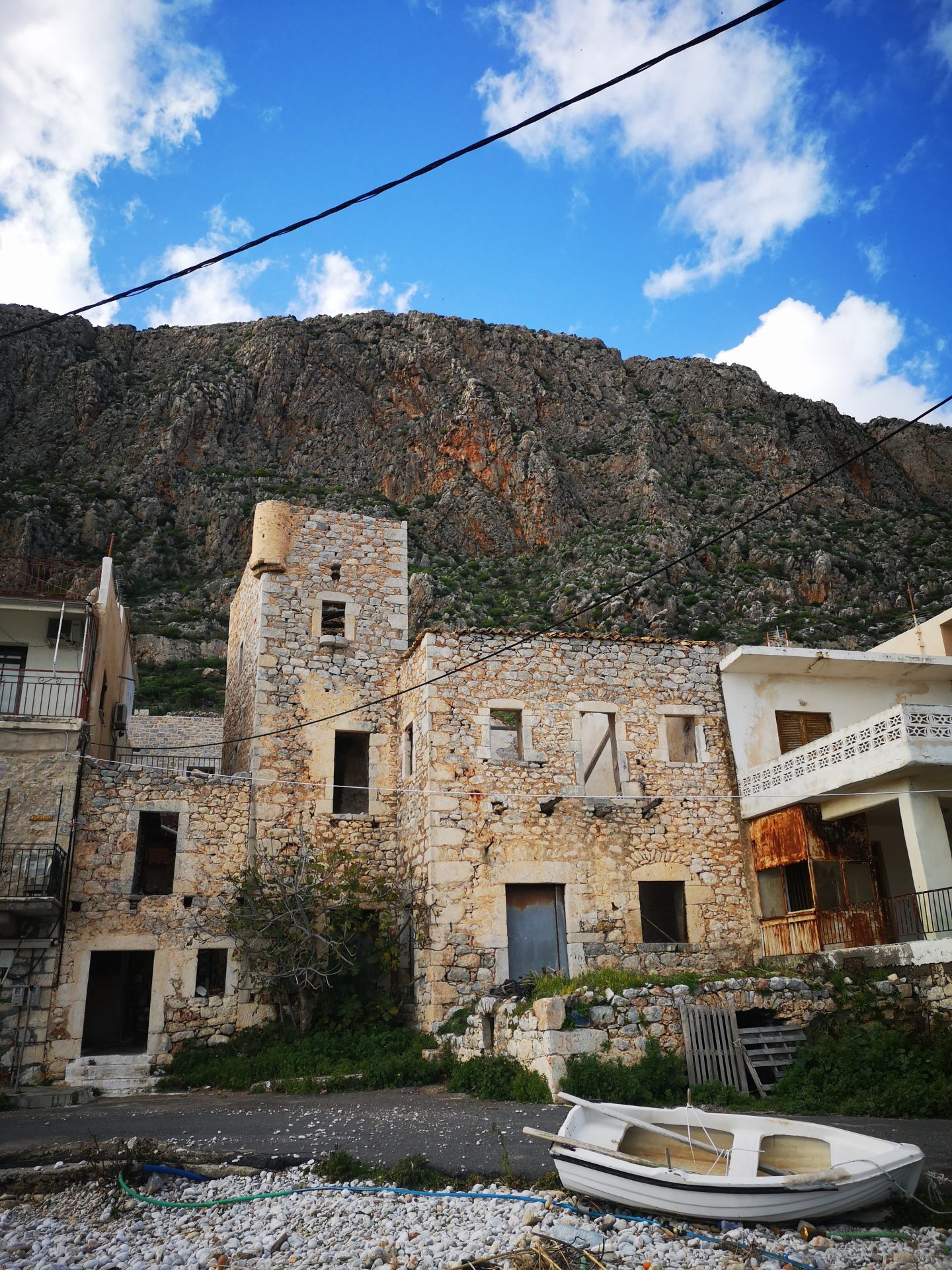
On the north east coast of the Mani is its biggest town, Gythio. We don’t linger. Outside the town on a sandy beach rests the rusting hulk of the Dimitrios. This photogenic shipwreck has been stranded here since 1981. Nearby, on a dirty dog turd infested piece of muddy land, are a number of motorhomes. Why do people choose to stay in a place like this? Camaraderie perhaps. As we are about to discover there are beautiful remote locations on which to park up.
A reminder of Vanlife Rule No. 6: Always drive to the end of the track. Our roadmap indicates that there’s a west facing beach overlooking Skoutari Bay. It’s great to find a sunny west facing beach on an east facing coastline. The track leading to it is characteristically narrow and steep. It ends at a small pebble beach on a secluded bay. We are alone in the sunshine so we swim naked as God intended. There’s a tiny, uninhabited, single storey cottage on the beach with a fine walled olive grove and neglected garden. Jo finds a scrap of paper on which she writes “If you ever want to rent out this cottage please call……. or email ……… We’re excitedly awaiting contact! In the evening we light a small fire inside a circle of big pebbles. After sunset the sky is almost white with stars, some of them shooting. Despite it being January, we sleep the night with the van door open. What a place this is. Our first night in the van for almost six weeks in this small paradise is such a pleasure.
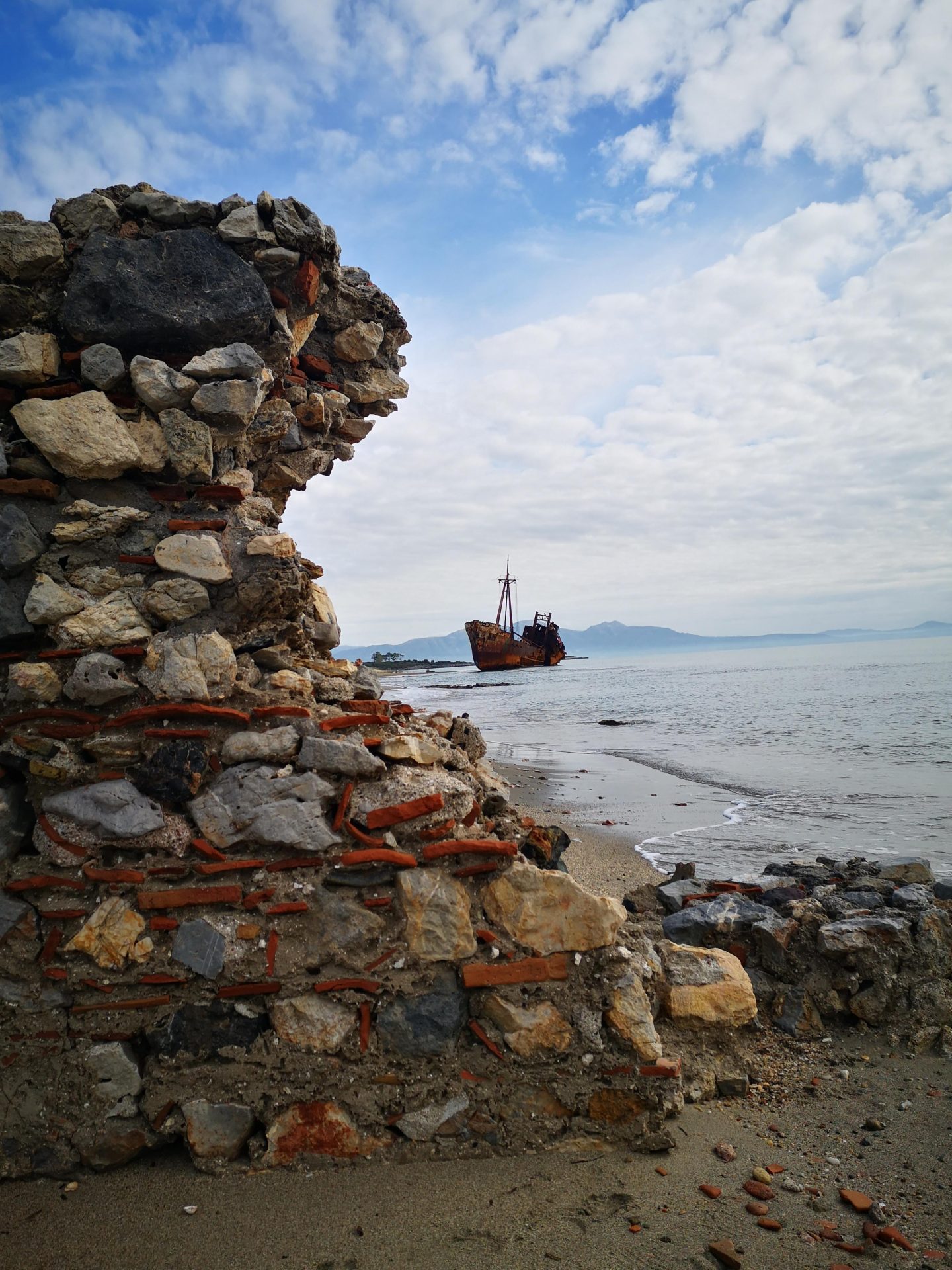
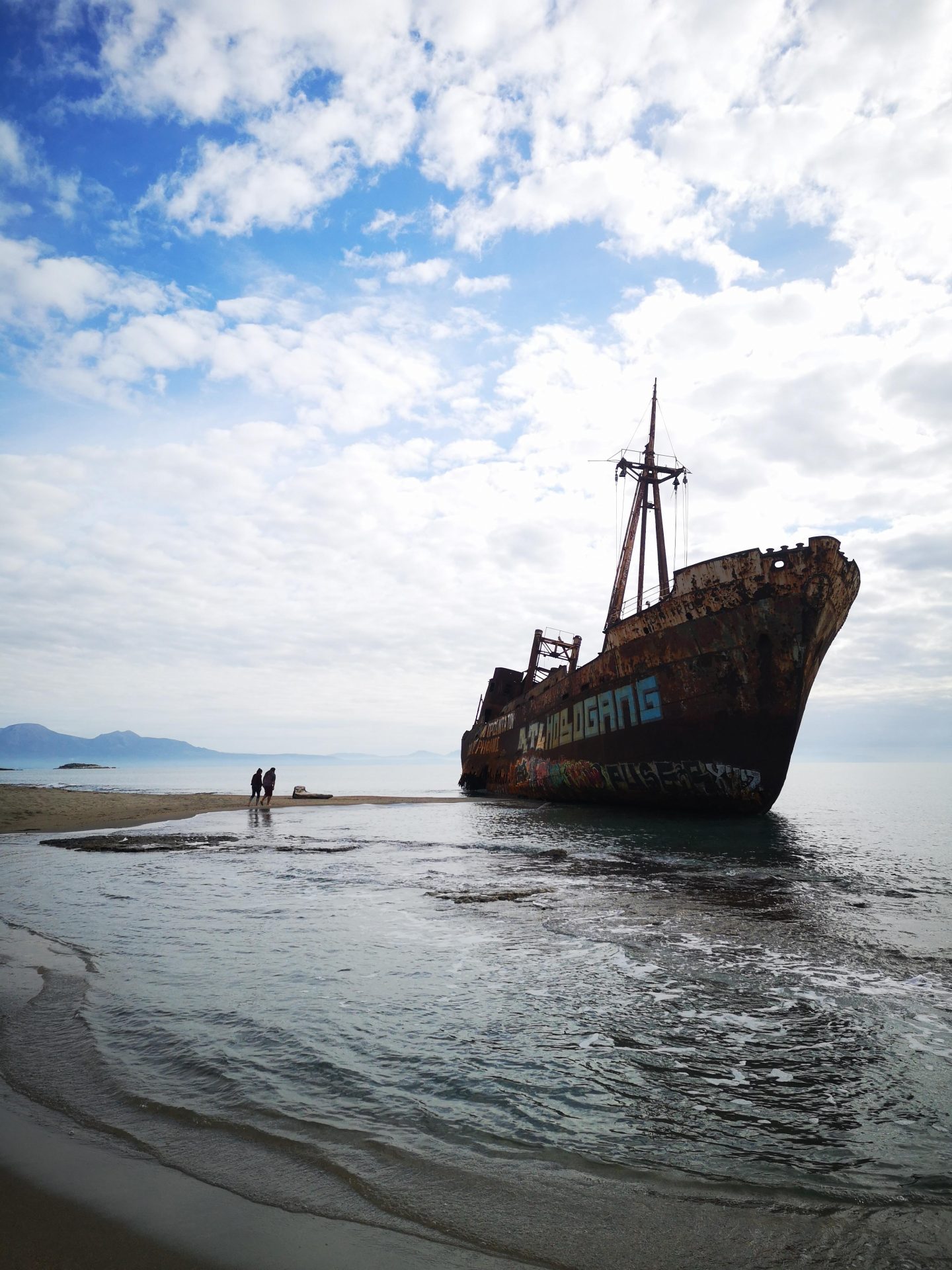
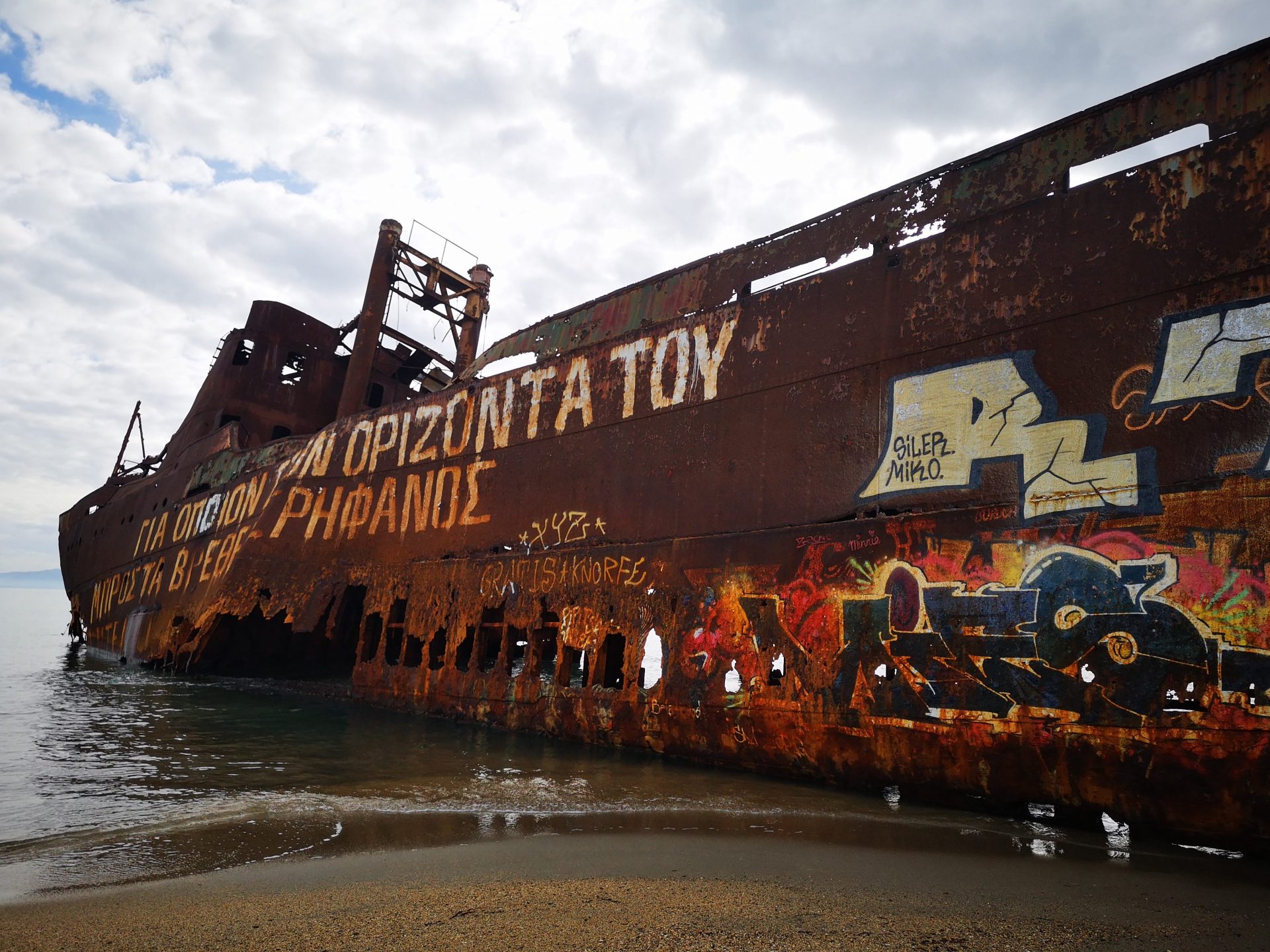
We only visit a handful of the magnificent destinations in the Mani: Vathia, a village of many stone houses and towers, built upon a hill with the road winding around it. Limoni, a coastal village on an aquamarine sea, approached via a road looping down from the hills. The slightly odd pebbled Abela beach at the end of a dirt track – bookended by an empty villa and a deserted pizza restaurant. Approaching the beach, in the distance I can see a fine looking two masted sailing boat moored in the bay, but up close it is algae covered and obviously long abandoned.
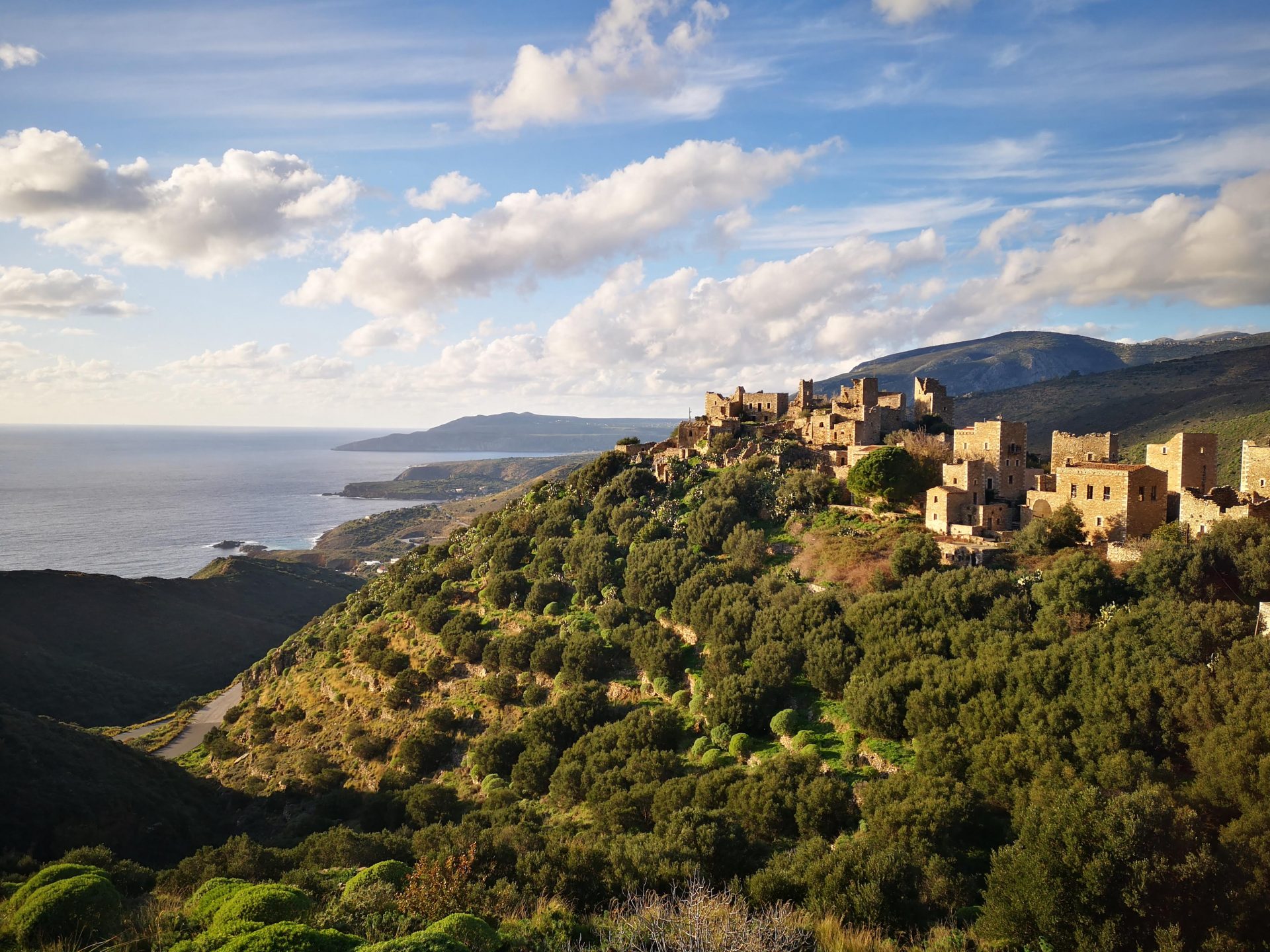
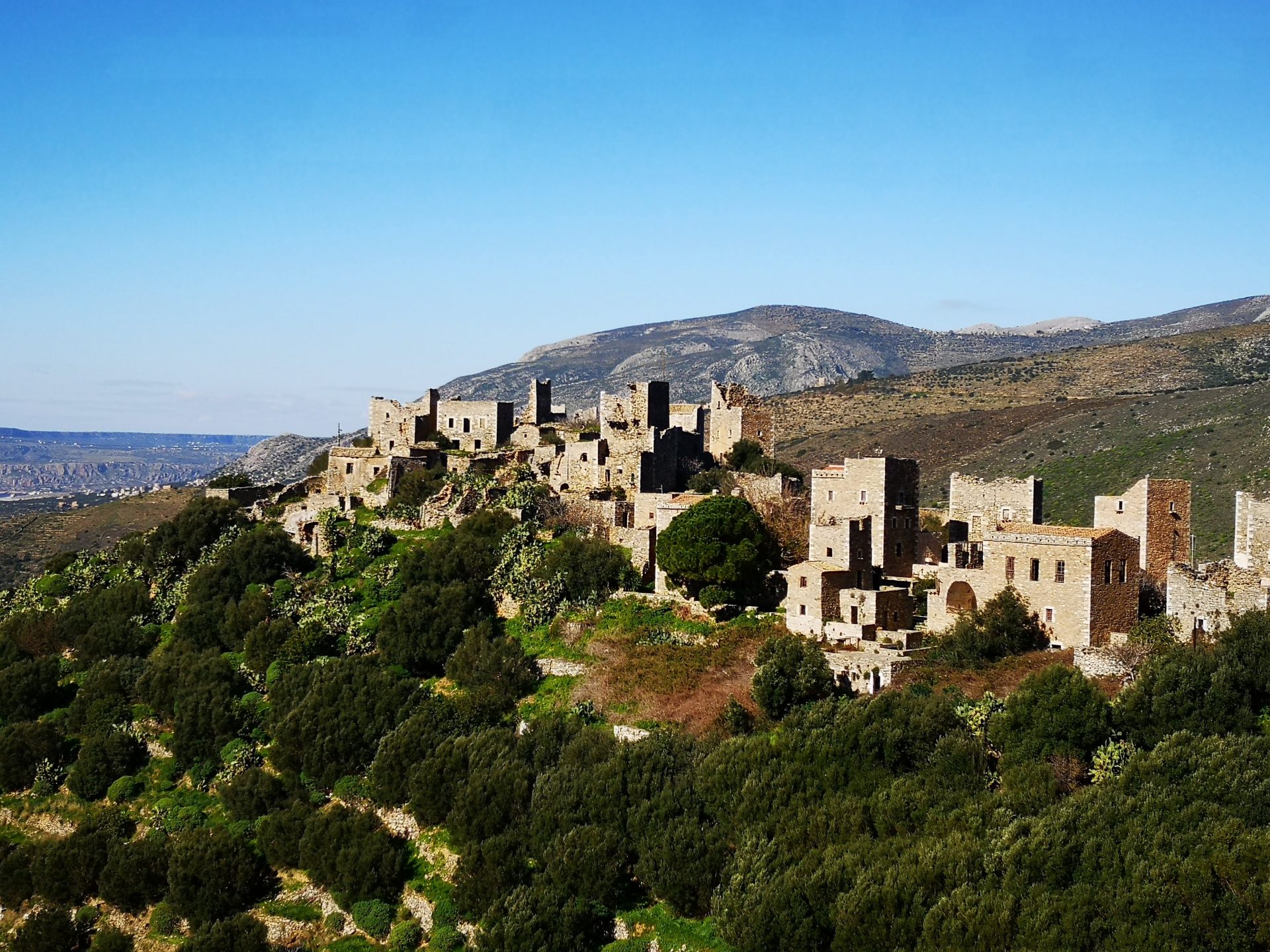
At the most southerly point of the Mani, actually the most southerly point of mainland Greece, sits Cape Matapan (or Cape Tenaro). I often wistfully imagine where I’d like my ashes scattered and I suggest to Jo that this beautiful place is a possibility, until we discover that the ancient Greeks believed that here was the entrance to Hades, the underworld of classical mythology – hell to you and me! The Spartans viewed this as a highly significant place of worship, and they built several temples to their gods along the rocky headland. Most prominent amongst the surviving ruins, are the remains of a temple dedicated to the sea god Poseidon. On the ground is an almost complete circular mosaic. It is open to the elements yet, after thousands of years the fabric of it remains intact and the colours are vibrant.
We trek the forty minute walk to the Cape Matapan lighthouse and eat lunch sitting with our backs against its southerly wall. In March 1941, nineteen year old Mavis Batey, a codebreaker at Bletchley Park started working on the Italian Naval Enigma machine, and by late March 1941 she effectively broke into their framework, deciphering a message which said “Today’s the day minus three”. She and her colleagues worked for three days and nights and discovered that the Italians were intending to assault a Royal Navy convoy transporting supplies from Cairo, Egypt to Greece. The messages they deciphered provided a detailed plan of the intended Italian assault, which led to the destruction of much of the Italian naval forces by an Anglo Australian fleet off Cape Matapan. This was Italy’s greatest defeat at sea with the loss of over 2,300 sailors. Unlike land battles, there is no war memorial or remnant of this massive and largely forgotten engagement.
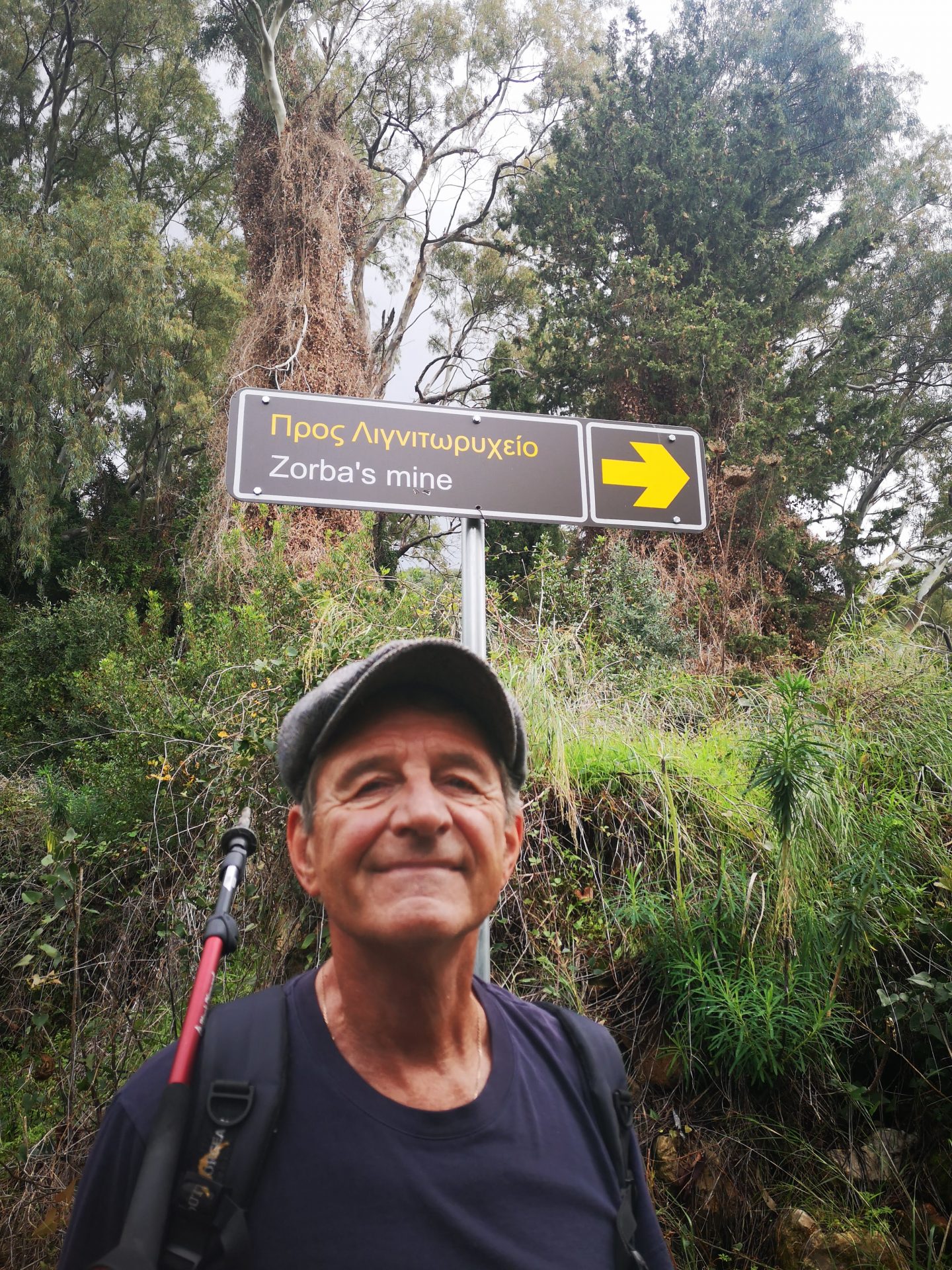
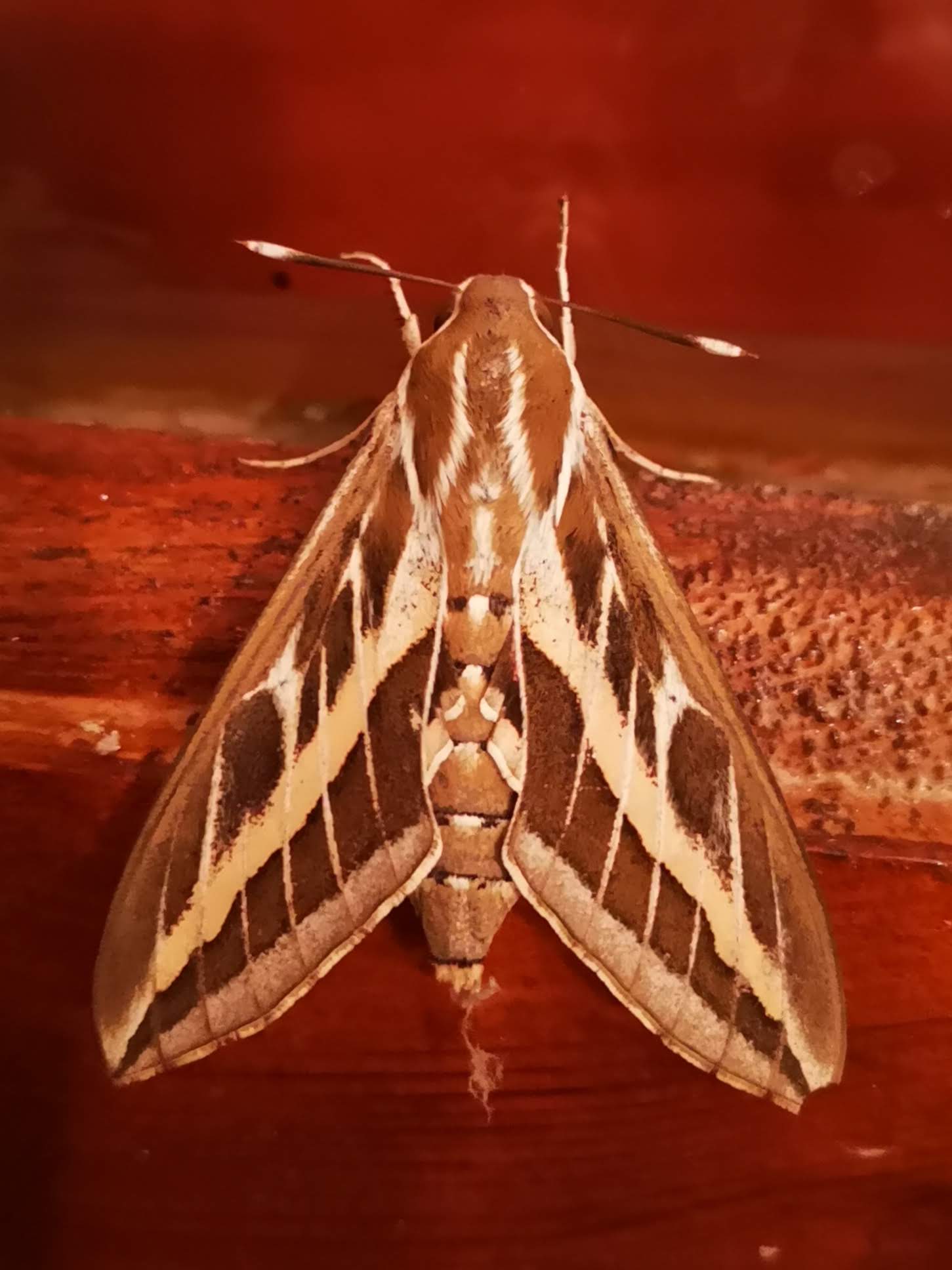
Back in the house in Stoupa we plan a walk to the village of Exohori. The wonderful English travel writer (In Patagonia), novelist (On The Black Hill) and journalist (The Sunday Times) Bruce Chatwin , who spent some time in the Mani, requested his ashes to be scattered, upon his death in 1989, around the little church in the village of Exochori. It’s a chapel I very much want to see and whilst it’s possible to drive to the village and walk the short distance to it, we’re going to walk there along a route that I’m certain Bruce would have taken.
The routes and paths through the hills are not much used and it’s pretty easy to get lost. We tend to do this at the start of a hike and this one is no exception. The map indicates that the path runs alongside a riverbed but the wonderful mapping app maps.me suggests that it actually runs in the river. We think this is probably unlikely and decide to follow the map but after a few hundred metres the path ends in a mass of dense tangled undergrowth. So we backtrack and descend the bank into the boulder strewn riverbed. The river is dry but I can see that it runs through an impressive steep sided gorge and in the right season or weather conditions it is fed with water from the mountains. The route on the map is marked with vertical blue and white trail markers which we see painted on a rock ahead of us.
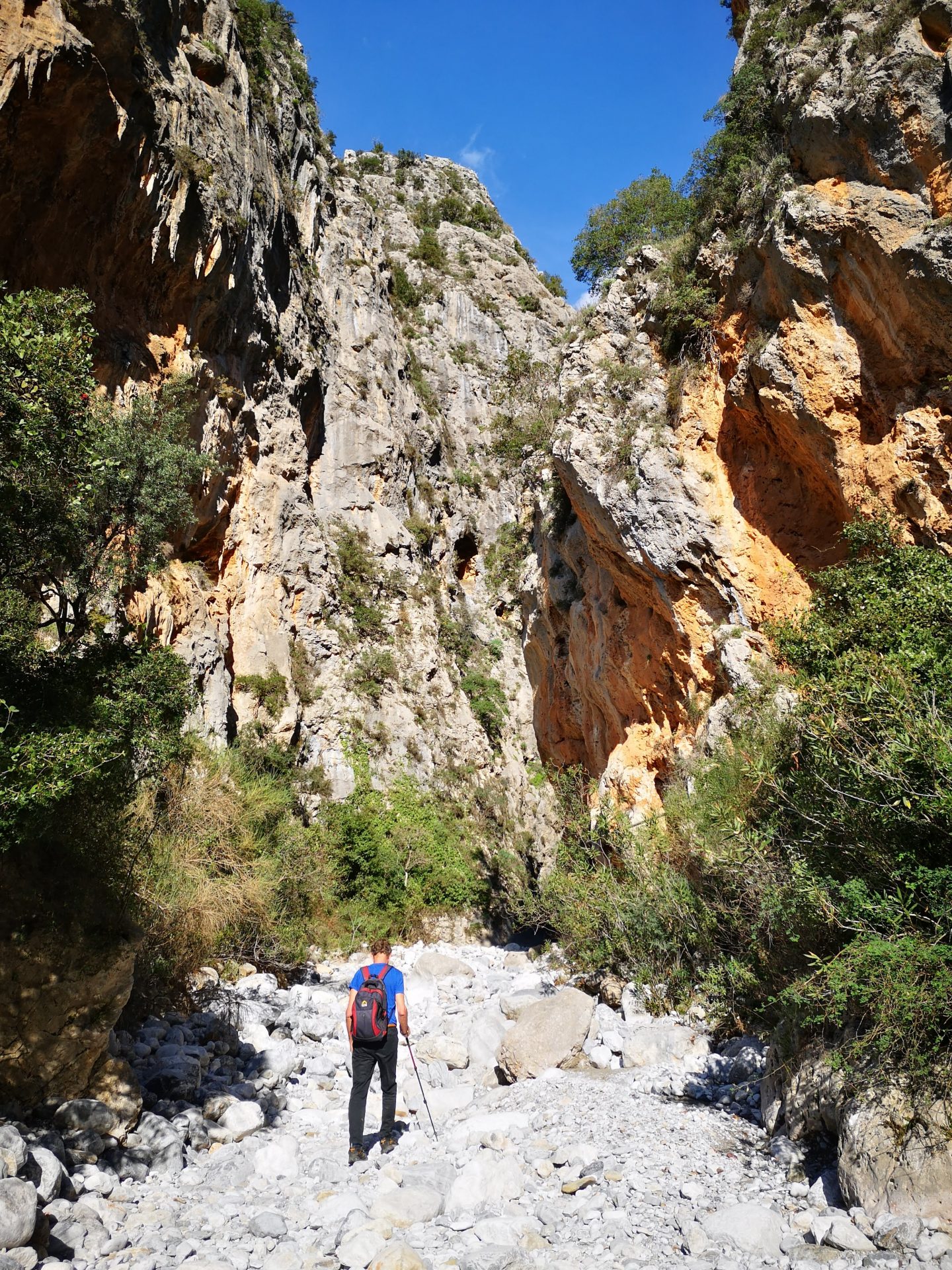
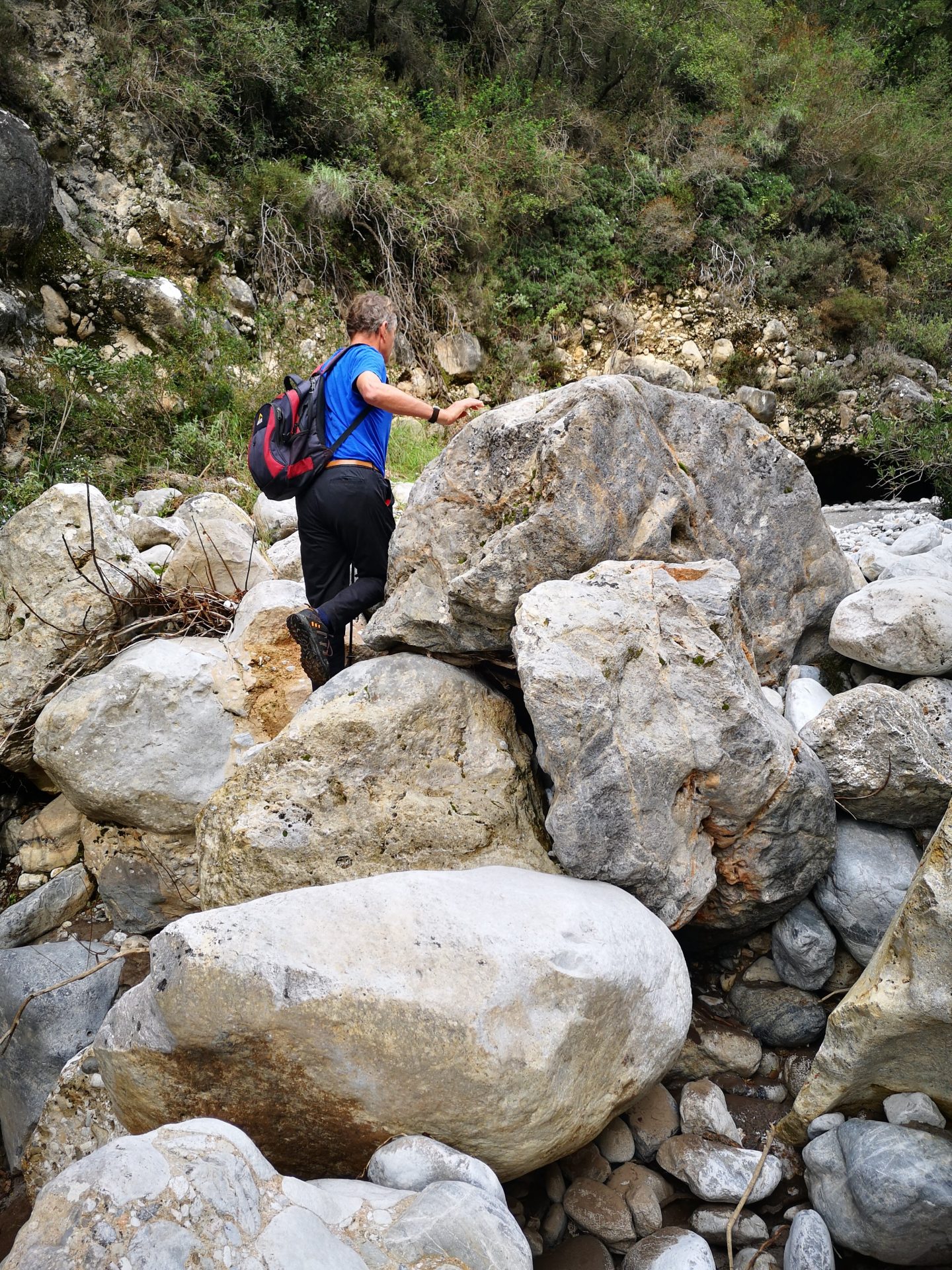
It’s a beautiful day, the gorge is stunning and the walk up the riverbed is a delight. It snakes through the gorge, sometimes narrowing out of the sunlight into dark steep sided defiles. The vista ahead and behind is constantly changing. At the end of the trek, Jo’s walking app tells her that we’ve done 20,000 steps. I reckon that about 19,000 of these were done bouncing onto boulders or climbing enormous rocks, and an aching right knee is testimony to this. We leave the river at the isolated Sotiros Monastery, where we climb up to a small chapel atop the hill. Is this Chatwin’s chapel? The location is about right but it looks nothing like the image I’ve seen on the Net. We’ve left the warmth of the gorge behind. The swirling wind is bitingly cold up here. We sit in the sun against the chapel wall and eat lunch but there is no escaping the chill. We move swiftly on.
As we approach Exochori Jo spots a chapel hidden within an olive grove. Sure enough, I recognise the pepperpot dome, topped with a stone crucifix. It’s a tiny Byzantine basilica with rough stone walls and ancient pantiles crusted with lichens. Laid out before it is a wonderful panorama of the sea. I can understand why a traveller would want to come to rest here, overlooking the sea on which Homer’s heroes had sailed. Unfortunately it is locked – sometimes a key is secreted in a hole in the wall or under a tile, but my search is fruitless. To complete our circular walk we follow the track with the white cross on a red background. Total distance 8.2 miles, duration 4 hours. It was hard going but worth every boulder stepped upon.
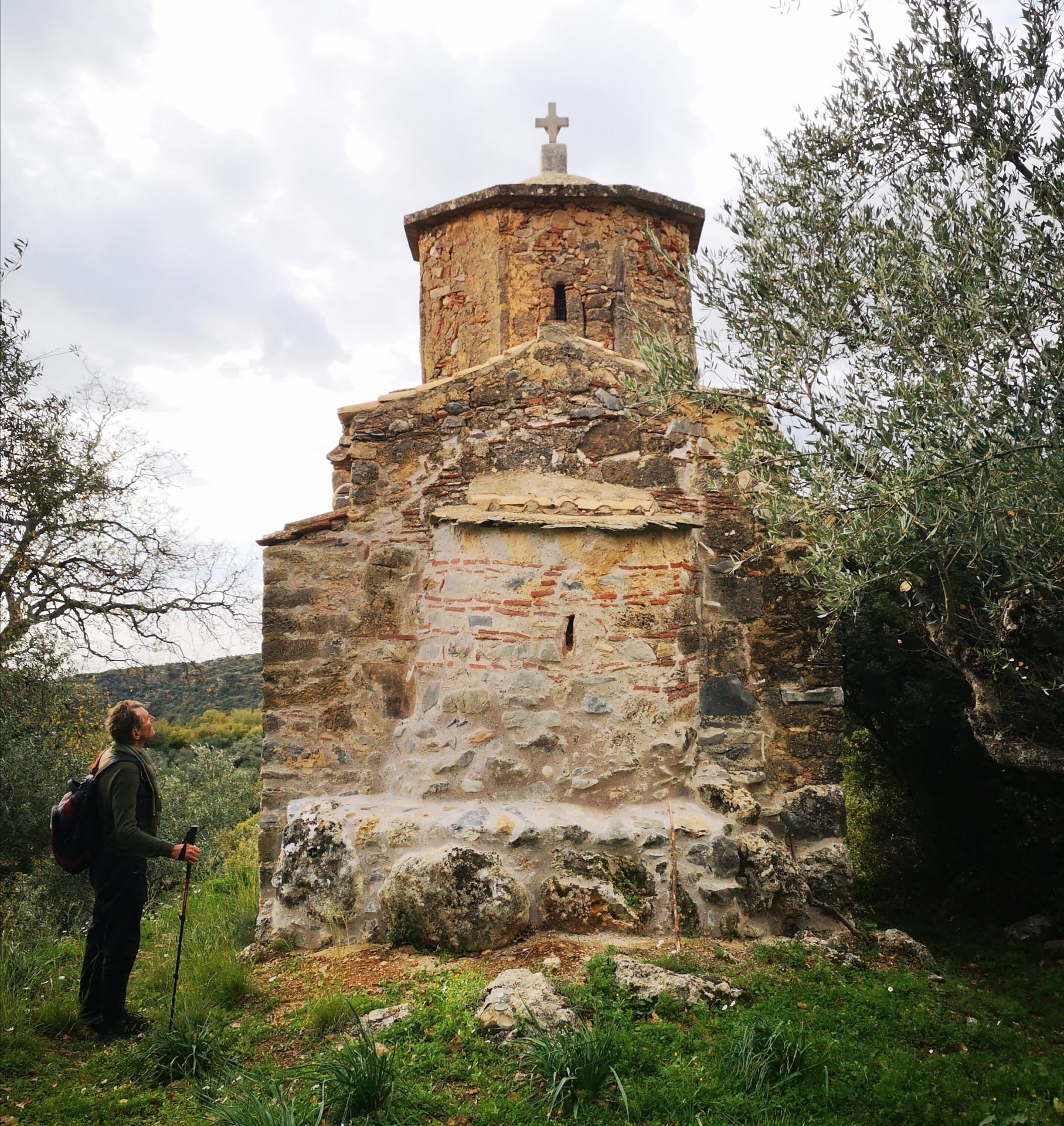
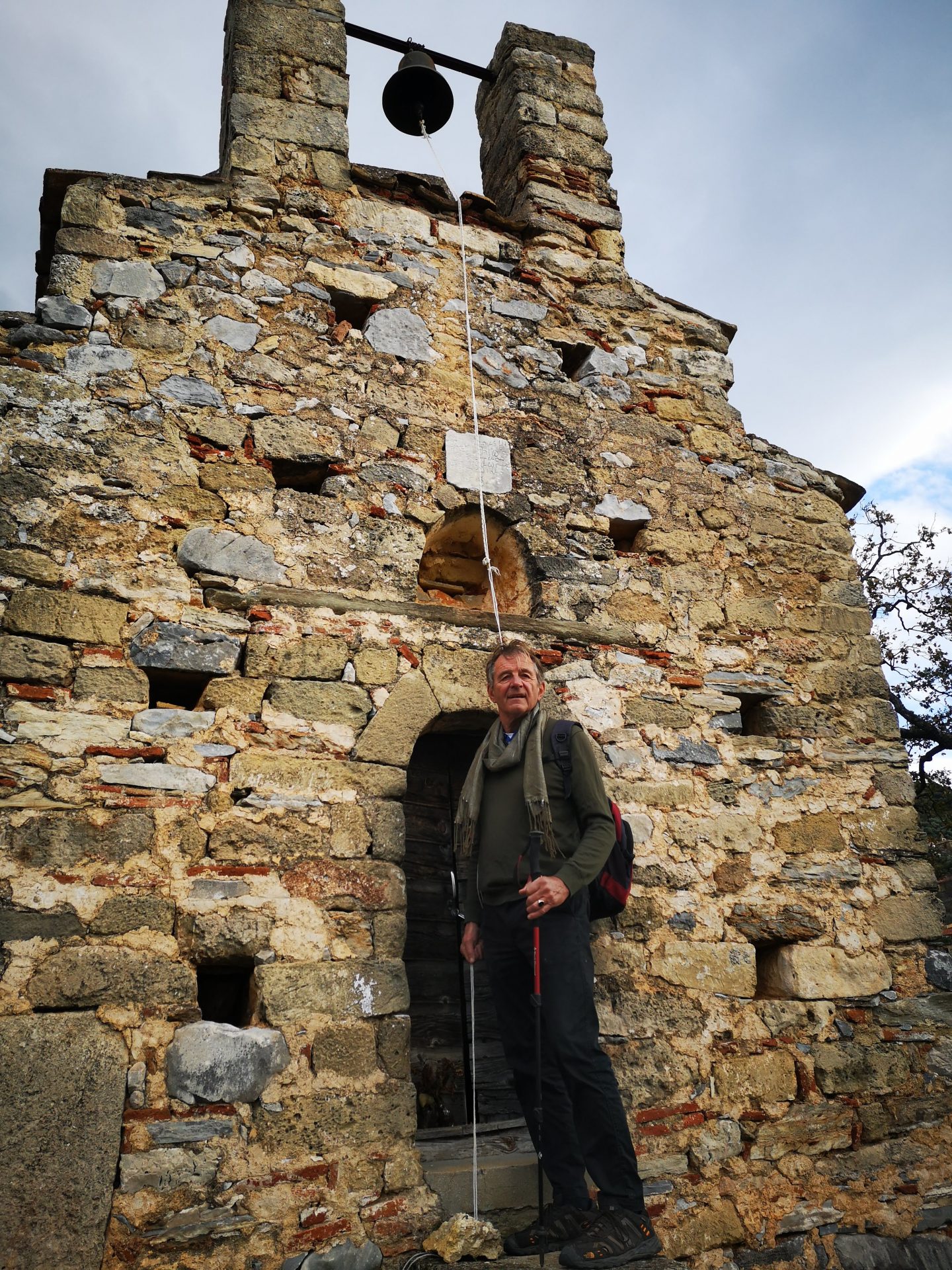
Talk about getting lost. A few days later we set out on what appears to be a straightforward 6 mile trek from Trachia on the coast to the hill village of Lagkada. The ascending path just disappears to nothing. Jo can see it on maps.me but we can’t see it on the ground. When you lose a track in these hills it’s a nightmare – huge ankle breaking rocks, dense skin ripping thorn bushes, impenetrable stone walls, deep hidden crevasses. After a while, turning back seems as pointless as continuing, so we press on. Eventually we find the track but it’s getting late and we’re so hurt and tired that we give up on reaching Lagkada and we seek out the path back to the coast. We see a fingerpost which confidently directs us along a lane back to Trachia. But Jo says that this doesn’t make sense – the lane doesn’t go to Trachia, it goes way north. Maps.me is to be trusted so we find and follow what we believe to be the track home but once again it leads into the undergrowth. It’s getting dark and cold and starting to rain. To be lost in these hills is bad enough. To be lost in the dark is ghastly. We retrace our steps to the deceiving fingerpost. Jo’s getting anxious. I see another track heading south and tell Jo that we must take it and hope for the best. We can’t just hang around up here till nightfall. The track starts well but once again loses it’s identity after a few hundred metres. We split up to explore possibilities. Once again Jo can see the descending trail on maps.me. She calls out in the dark “I’ve found it. Over here”. Sure enough, there’s a well defined stone path. Jo gives me a big warm hug of relief.
We wake up on the morning of 15th January and there’s snow on the mountains. Not a common occurrence here I think – the locals are out taking photographs of the snow dusted heights. We take the van up into the mountains so Jo can take photos. On our return we drive past Fido (not his real name), a sad eyed chubby mongrel who lives outside in a neighbour’s yard. When he can be bothered, he barks at us. Today he looks thoroughly frosty and more miserable than usual.
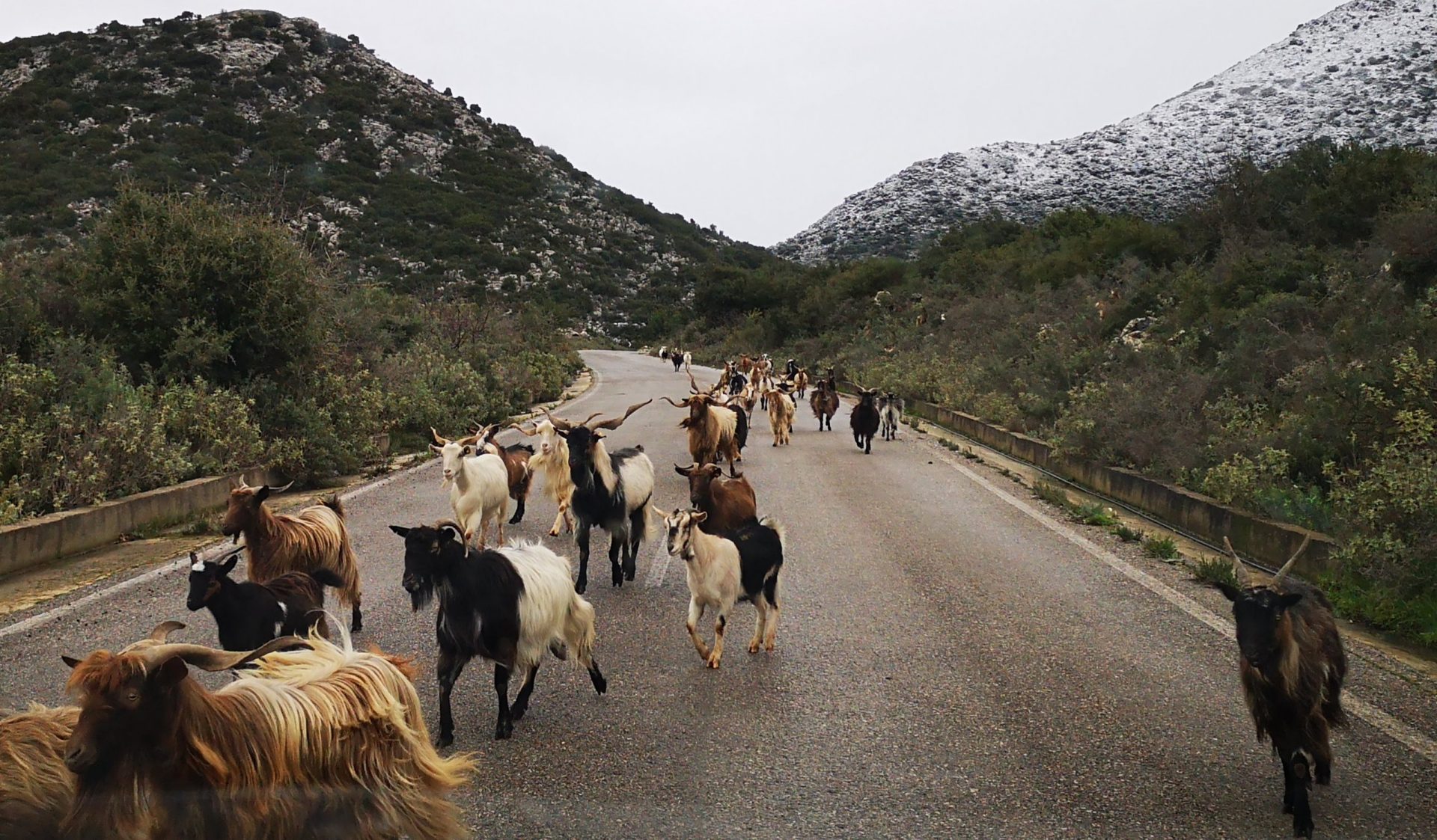
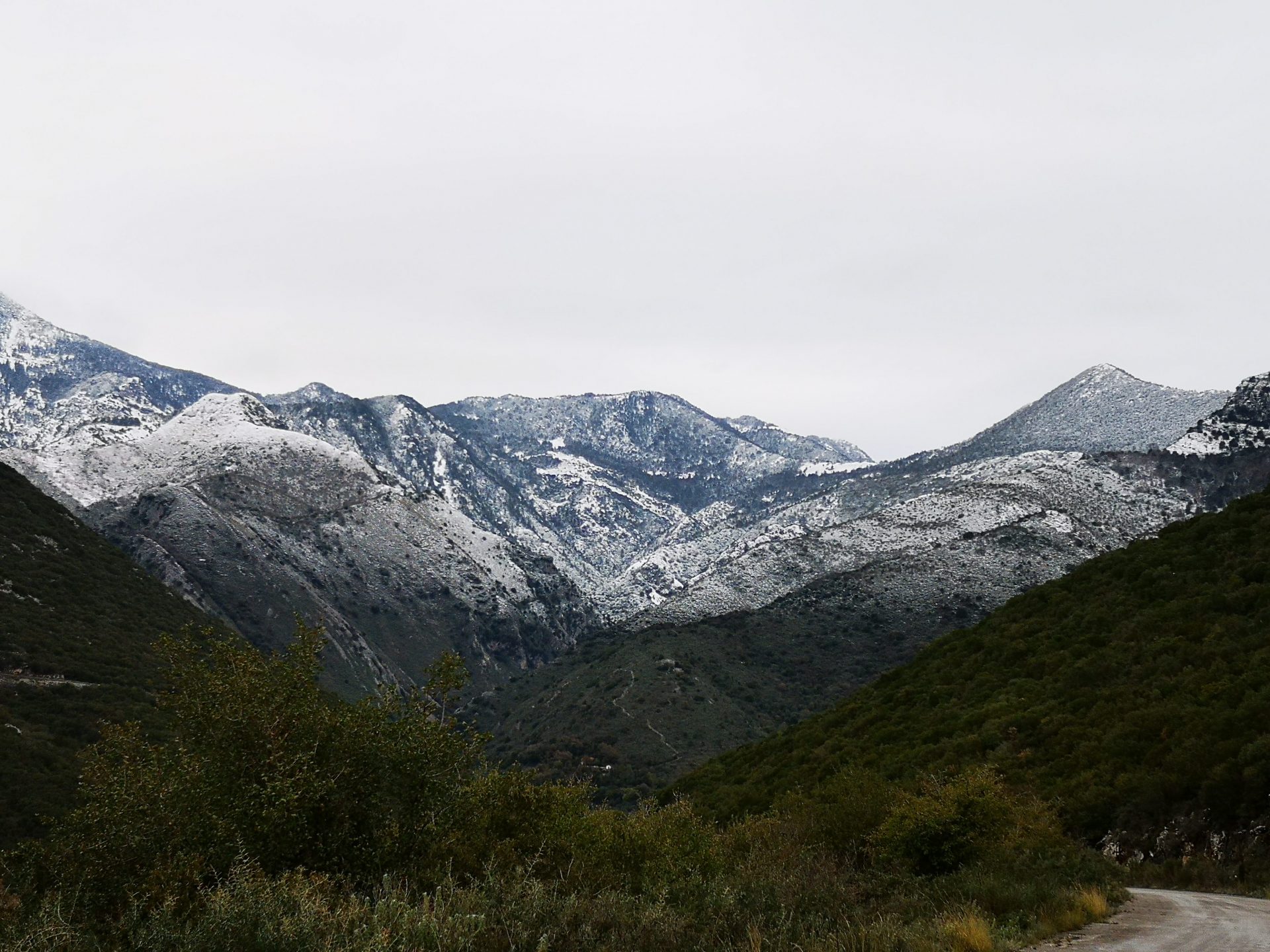



I have a cavity in one of my wisdom teeth which, because dentists in the UK were pandemic shut, I was unable to get fixed. It has become increasingly annoying and despite a genuine anxiety (fear!) of dentists I make an appointment with a local Stoupa dentist to have it looked at.
I’m early for my 10am appointment and there are no patients there. Paranoia sets in – he’s unpopular, shunned, possibly even dangerous. His assistant (I think she’s his wife) does a preliminary assessment. The dentist enters the surgery. He looks uncannily like Laurence Olivier as the mad Nazi dentist in the film Marathon Man. He is Doctor Death. They discuss my case in Greek (“we should have him put down”). Only the wife speaks English. “It is a useless tooth”, she says. “We will try to fill it. If that fails it is hopeless. We will pull it out”. Christ, whatever happened to crowns or other feats of modern dental practice. I make an appointment for the following morning and set off to get a second opinion. Jo is no help. “Get it pulled out” she says. “Trying to save it a waste of time and money”. All very well for her to say. Getting a professional second opinion proves impossible.
The next morning I’m at my appointed execution. “Do you want an injection?” asks the wife. Bloody right I do. She administers it as Doctor Death fires up the drill before the anaesthetic has taken effect. But he’s remarkably gentle and thorough. The filling is a painless success and I congratulate them on their professional teamwork. Cost 40 euros. Highly recommended even for pathetic paranoids like me.
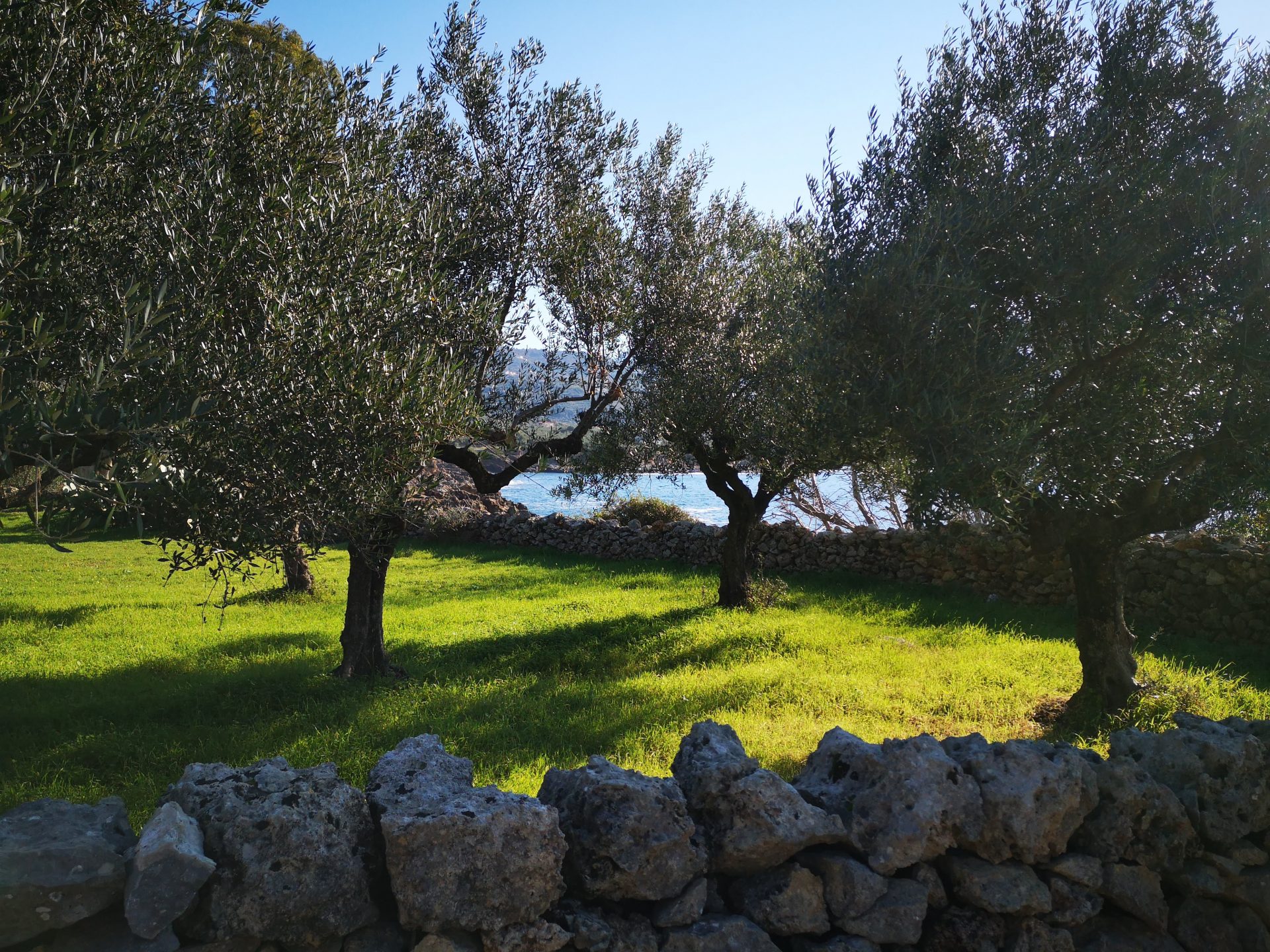
Jo’s Favourite Olive Grove in The Mani – By The Sea
A web of issues conspire to bring our time in the Mani and Greece to an end. Our van insurance cover only allows for six months in Europe in any one year. The restrictions imposed by Brexit will mean we’ll have to leave the EU in March or continue to a non EU country. Due to the Coronavirus pandemic, European governments are making cross border travel more complex if not impossible. The costs of increasingly onerous covid testing requirements and potential hotel quarantine rules are falling outside the scope of our tight budget. Moreover, Jo’s father, Michael, is unwell and she wishes to return to spend time with her family. We are compelled to return to England, but we will take a scenic route through central France, avoiding the snow and ice of the east and continue to travel responsibly and slowly home.





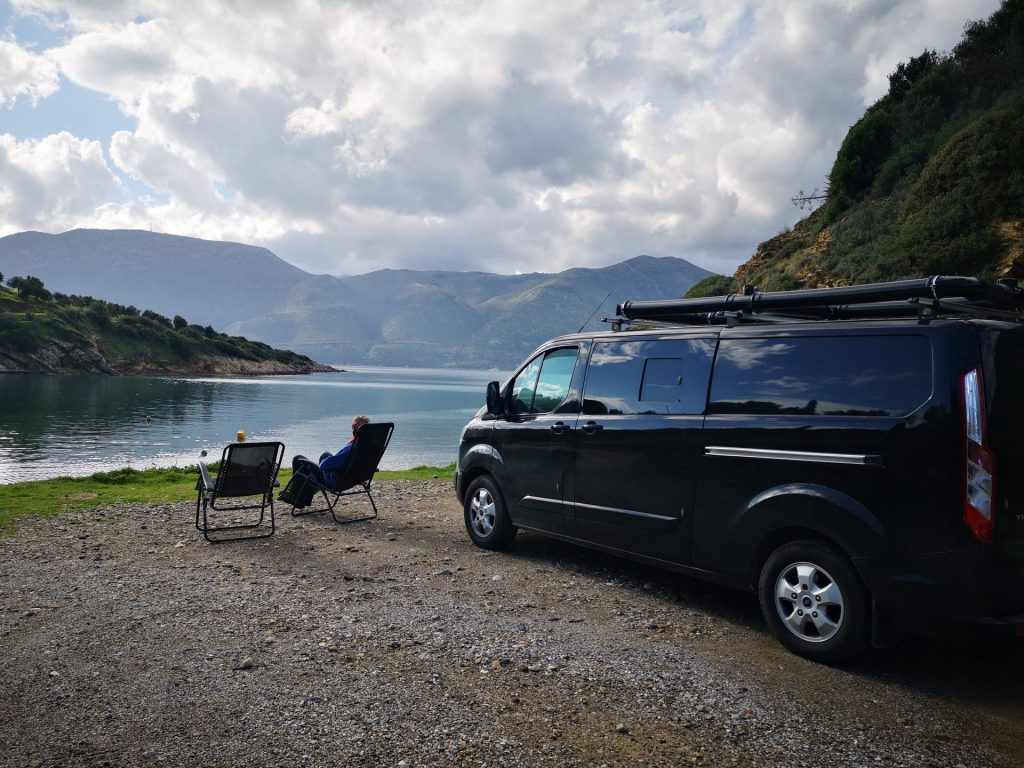

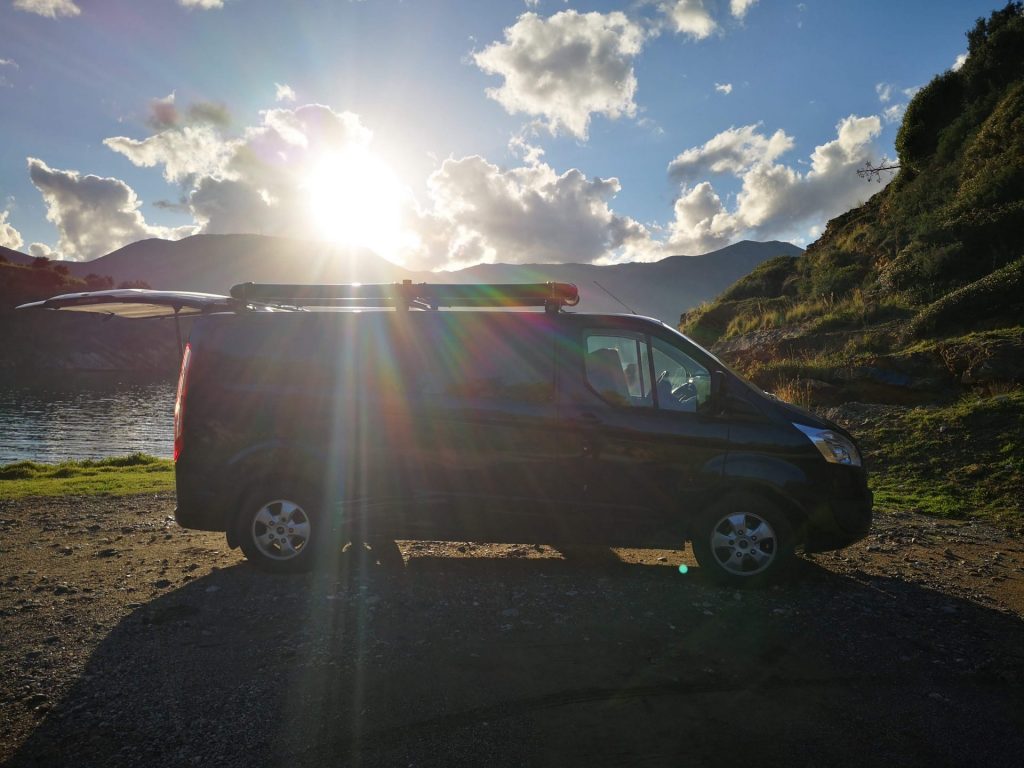

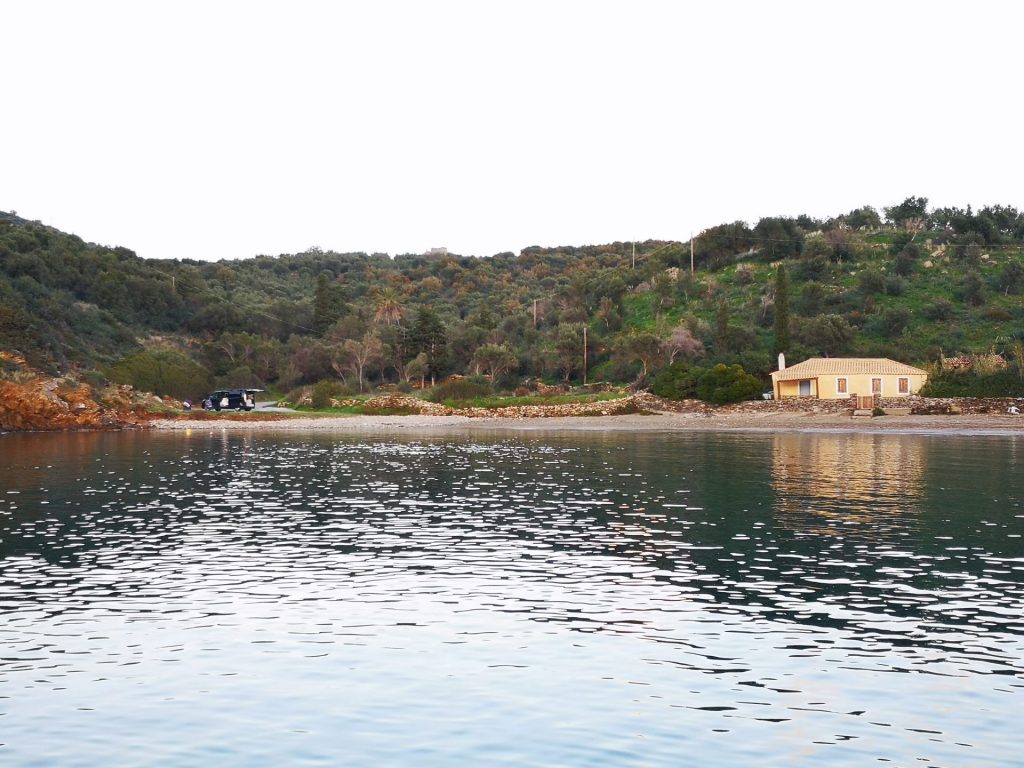
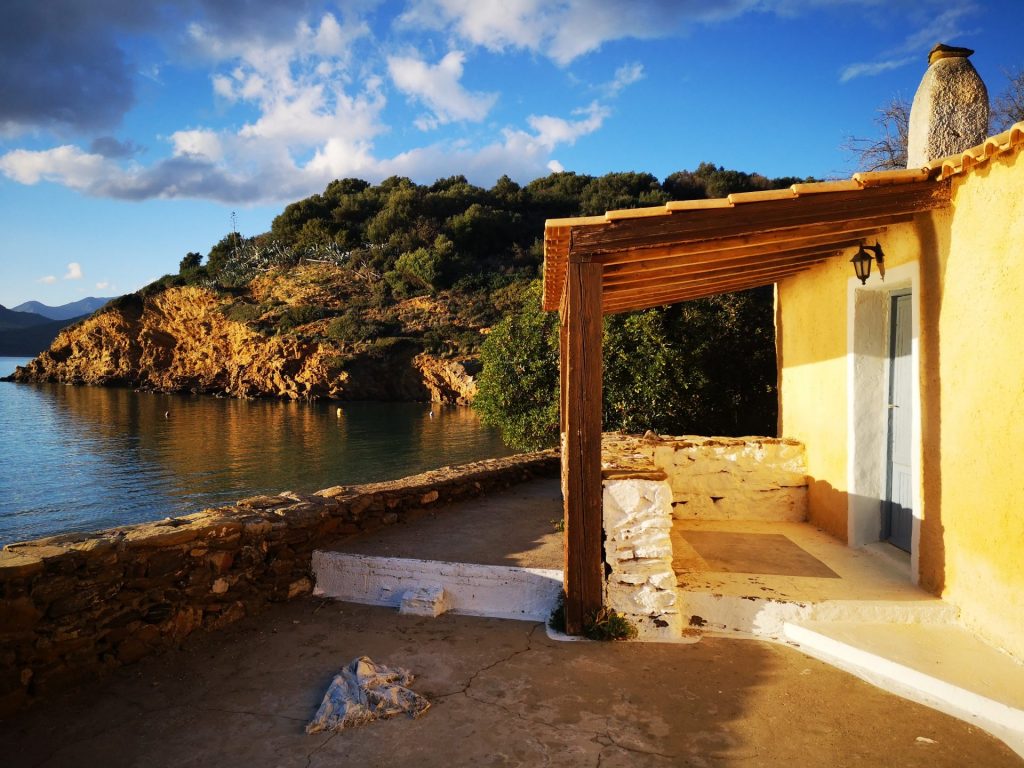

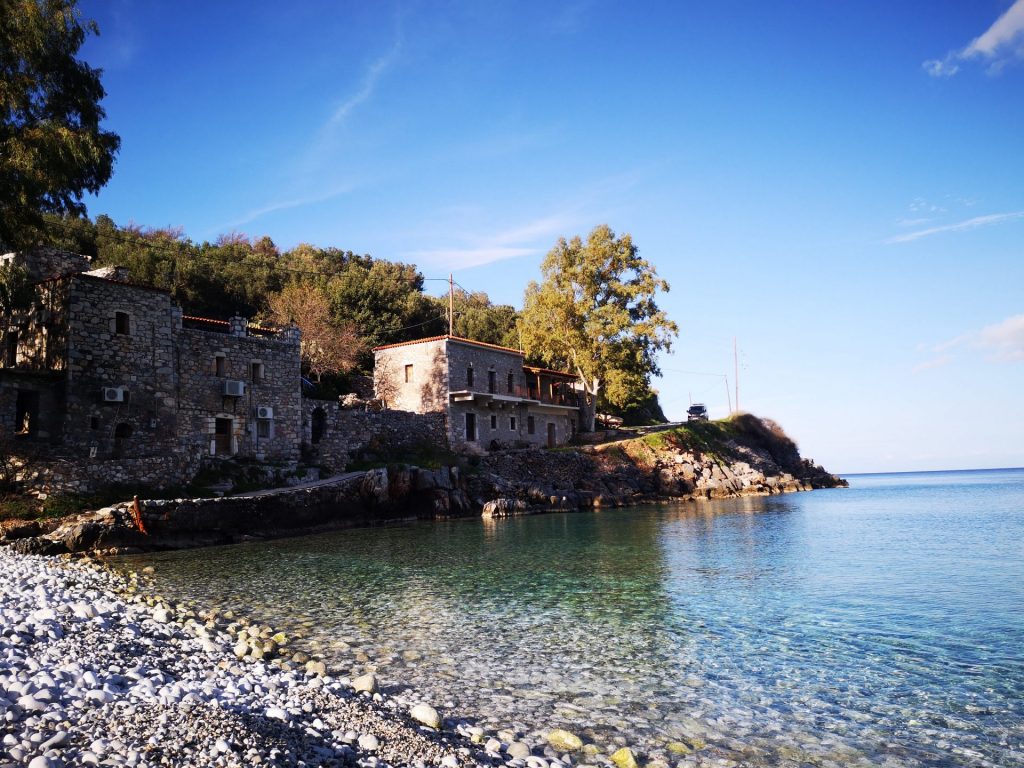
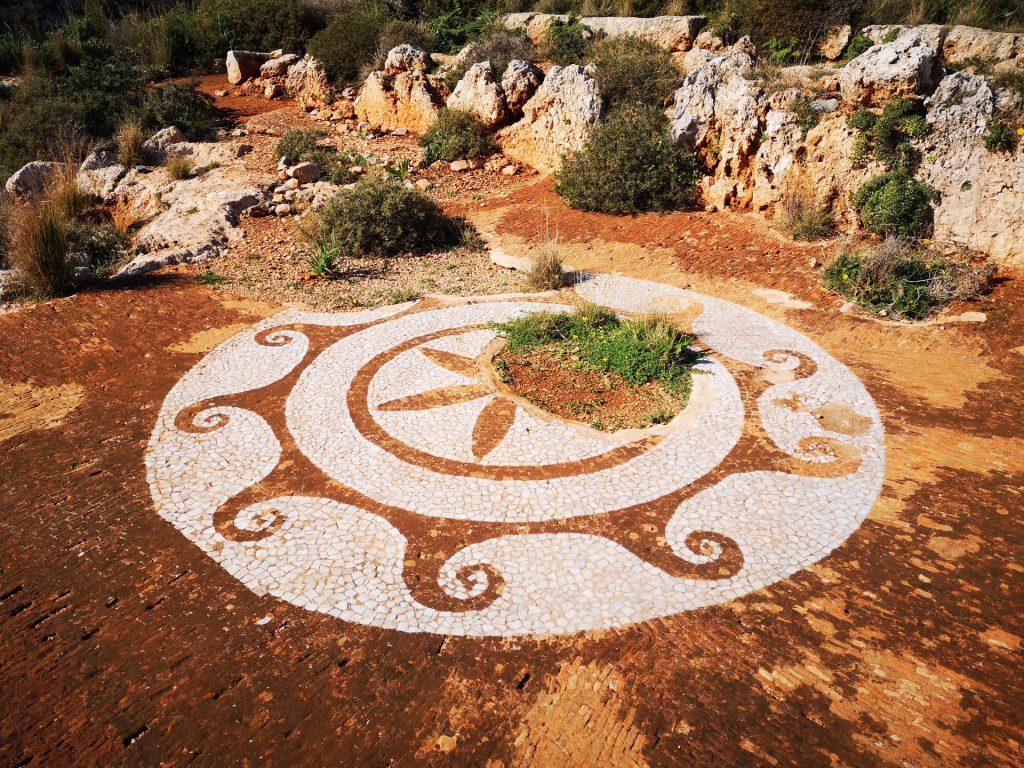
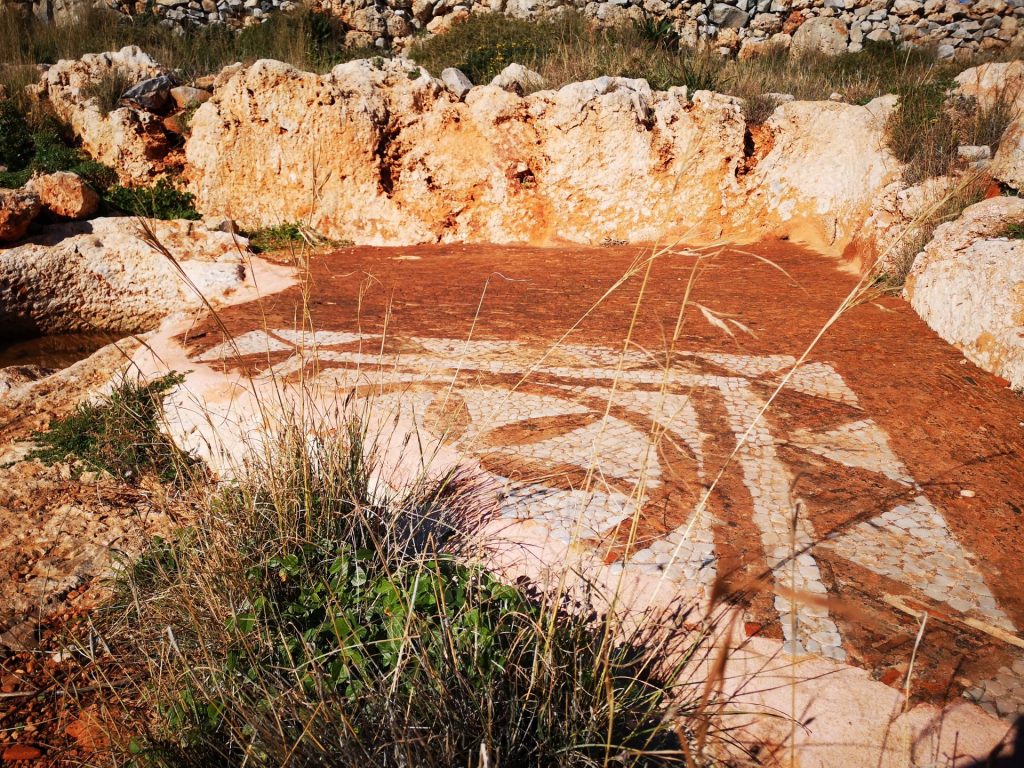

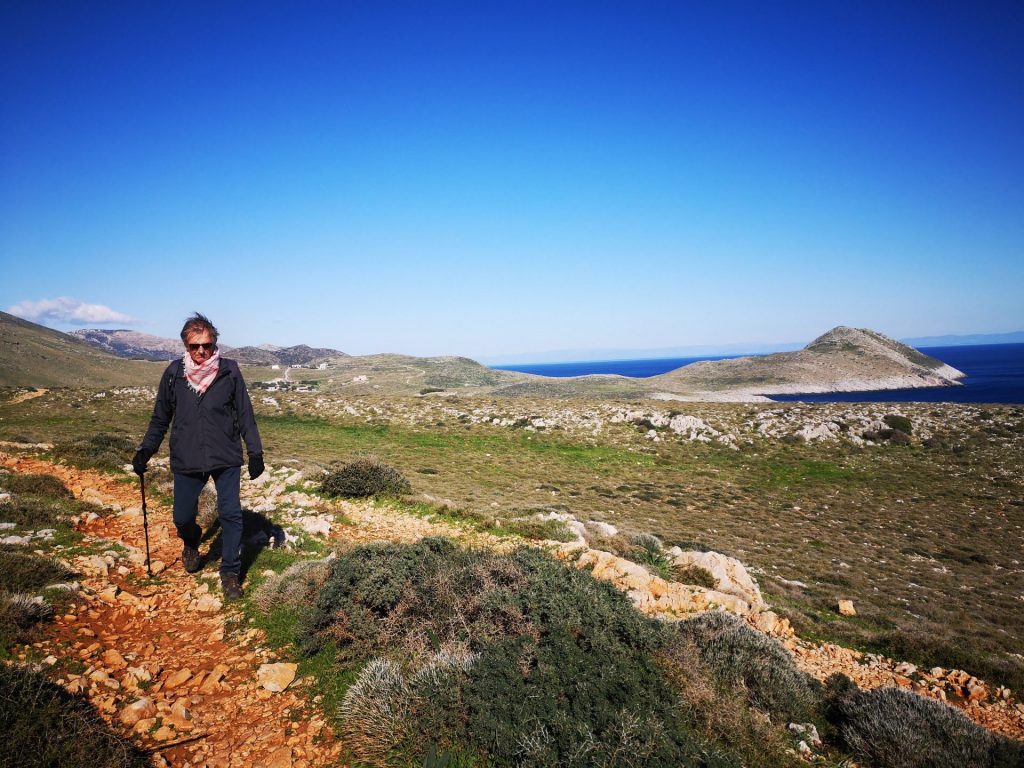










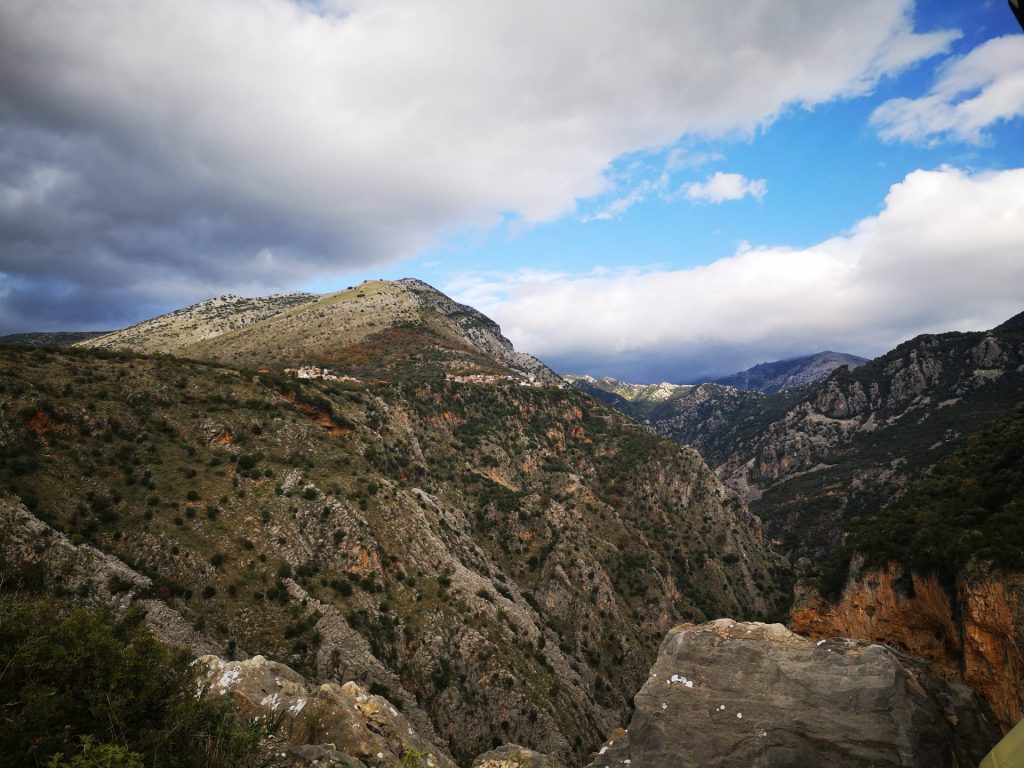

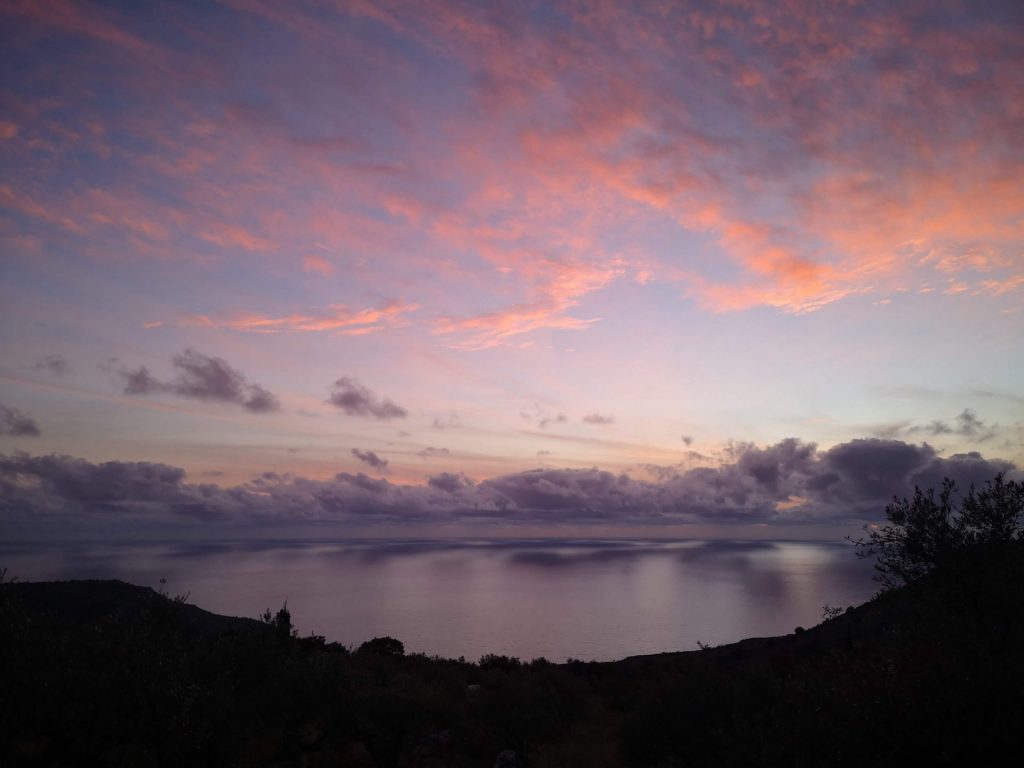


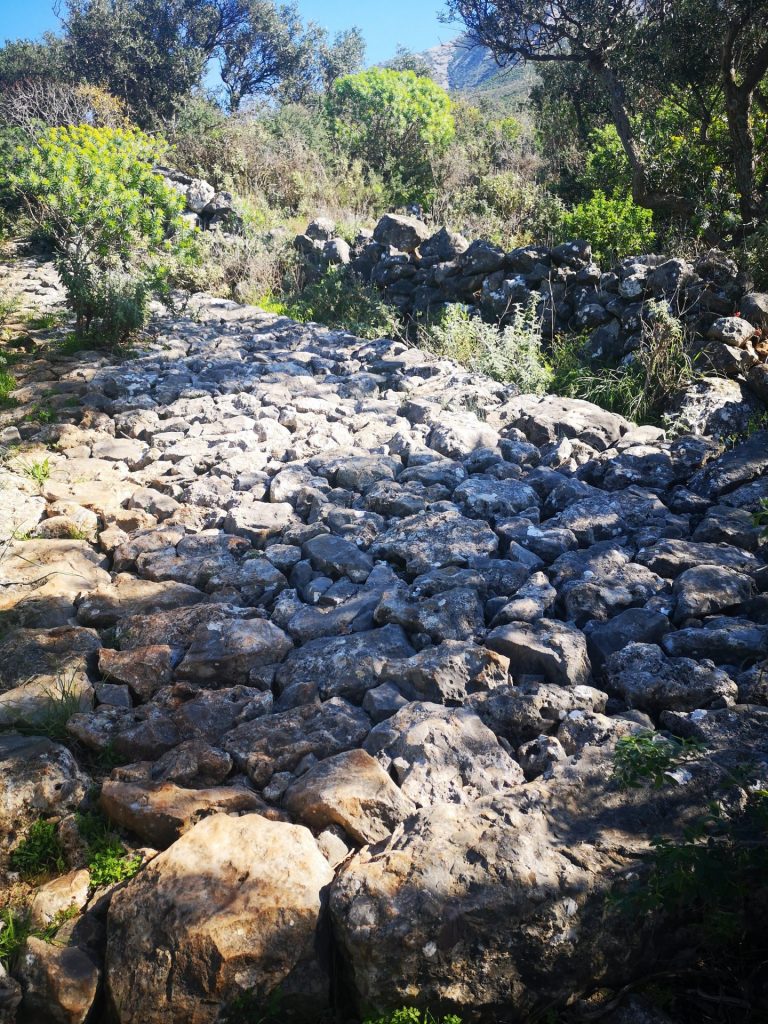
A lovely blog and photos.
👍😀
greatest post, i love it
Great pictures!